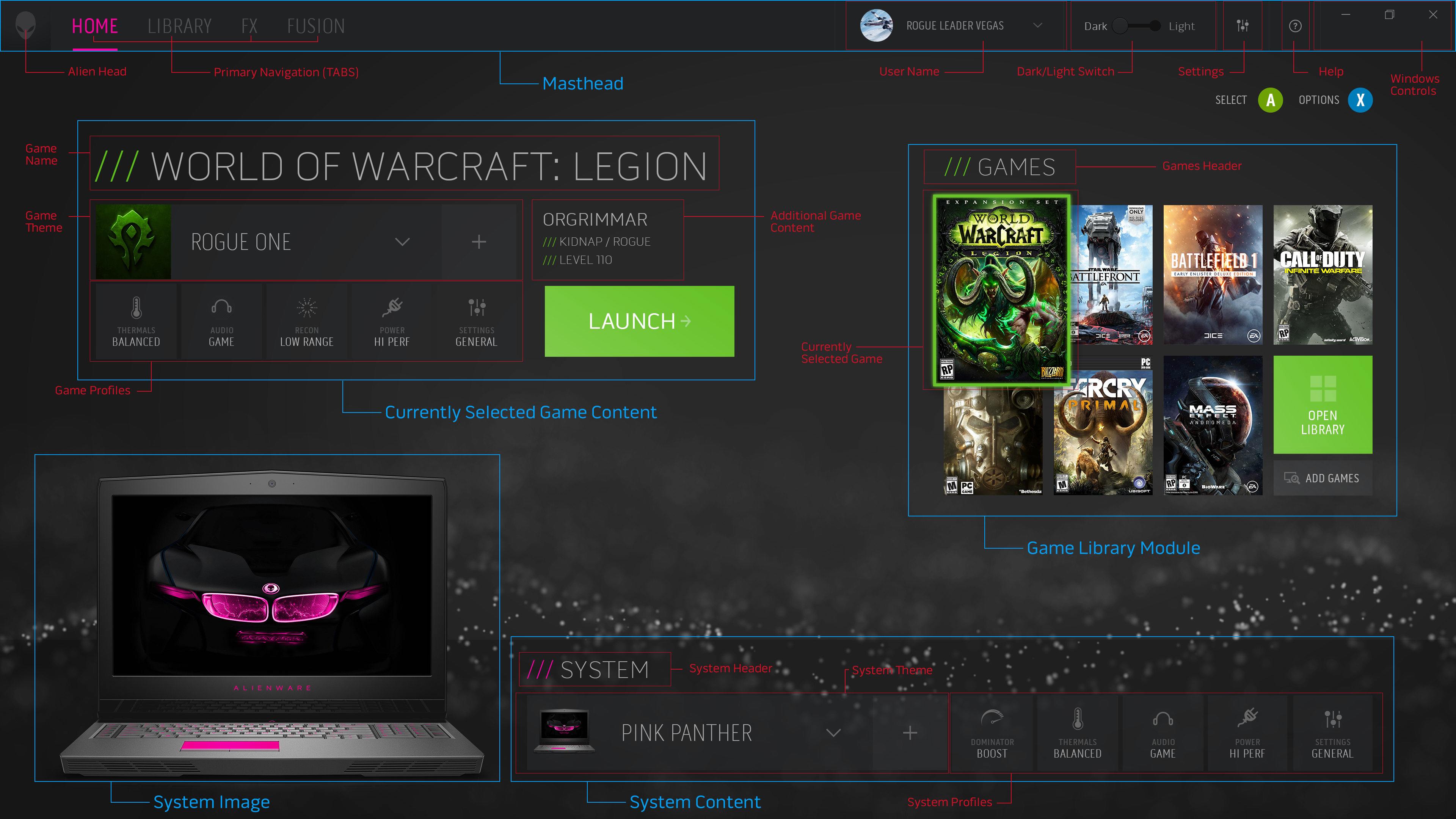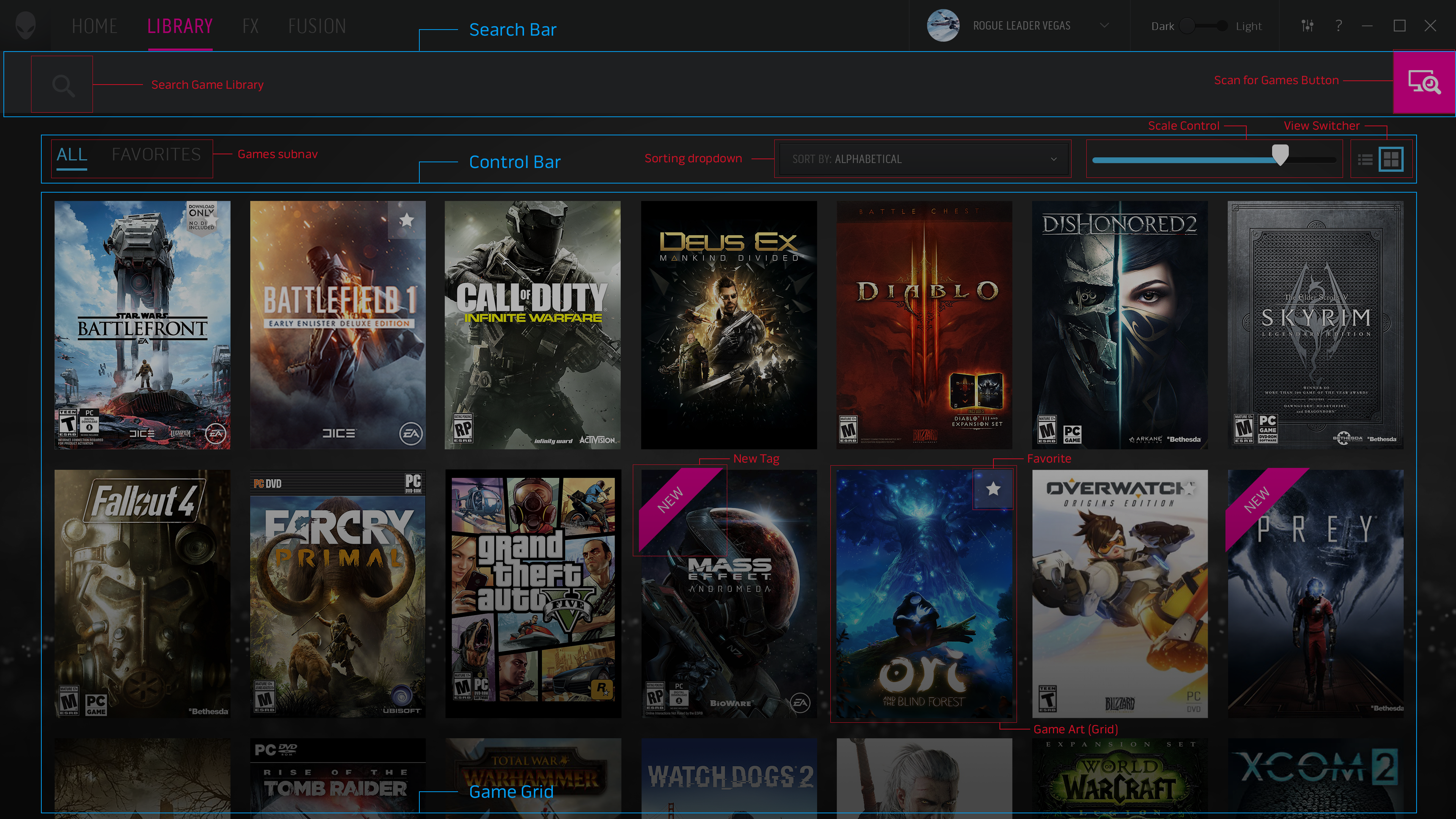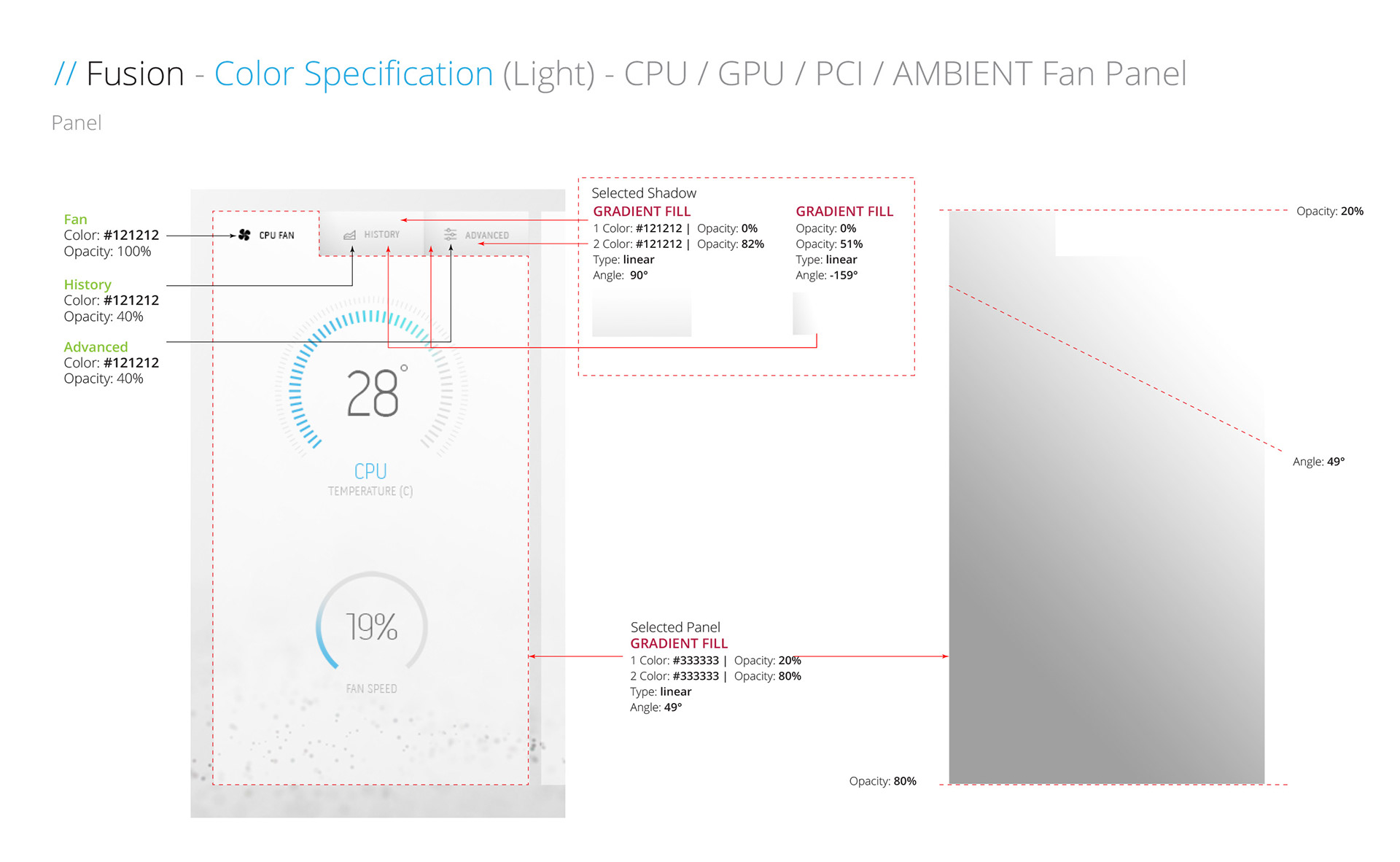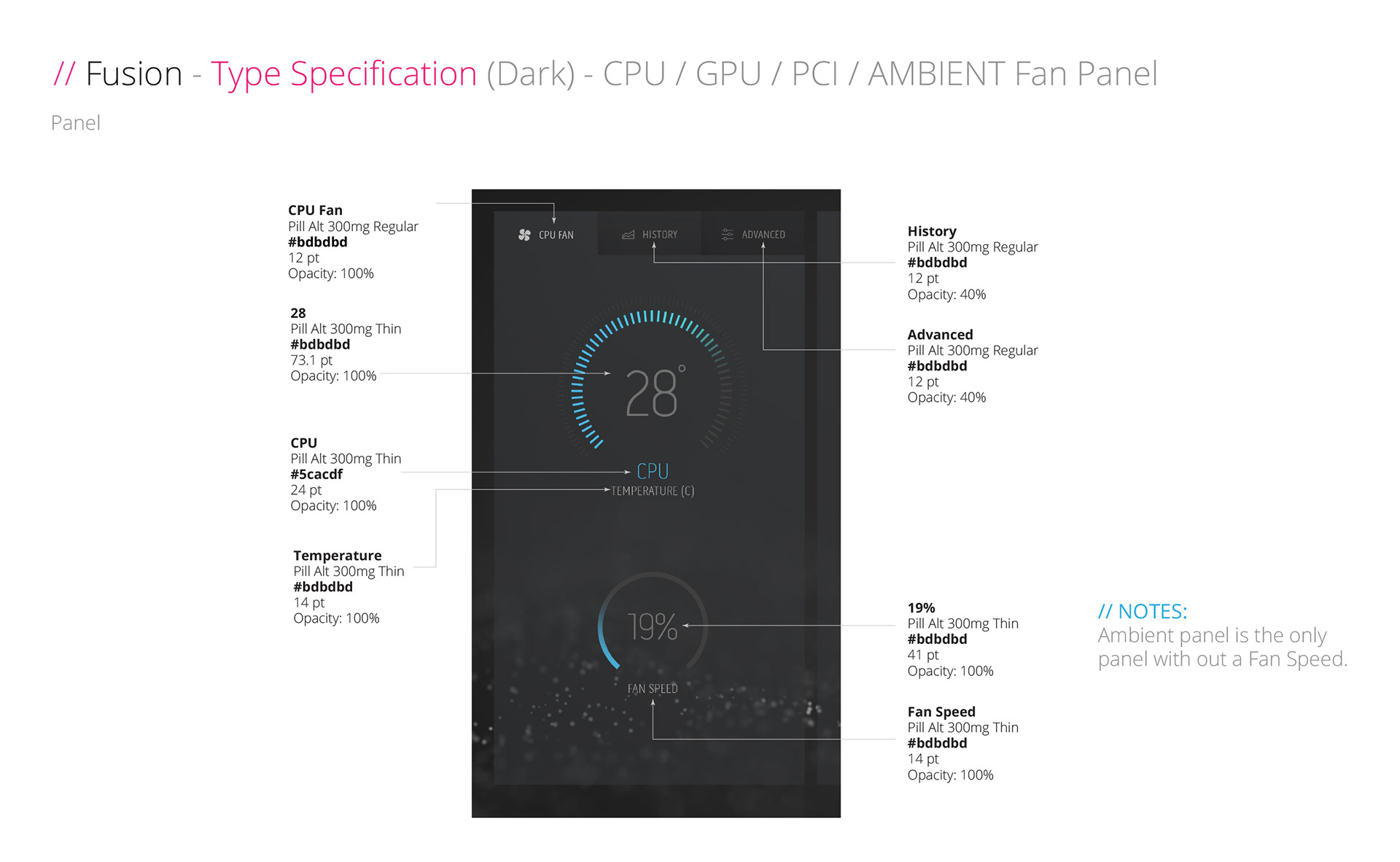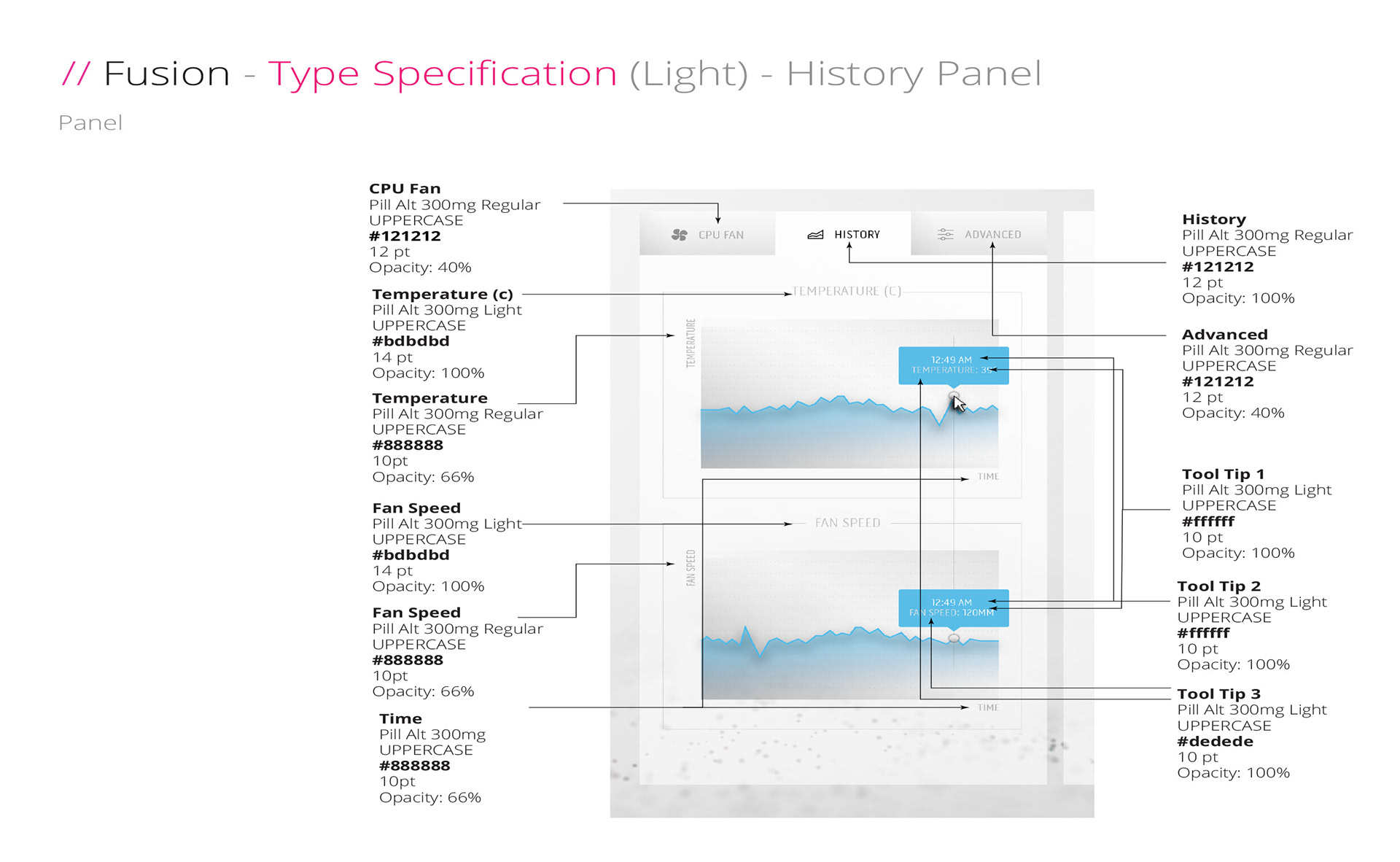Who is Alienware?
Alienware pioneered the gaming PC market, launching a multi-billion dollar industry with high-performance computers that defied convention. With distinctive lighting effects, cutting-edge graphics hardware, and bold industrial design, the brand established the benchmark for premium gaming systems.
Nearly two decades later, competitors had closed the gap, and Alienware needed to find new ways to push boundaries and reinvigorate the brand.
Where we started
The Alienware Command Center served as the software backbone of Alienware systems, controlling signature lighting effects, advanced audio settings, and graphics optimization. However, the platform was severely outdated—originally conceived and built by hardware engineers with limited user experience expertise.
Hardware capabilities had evolved dramatically, enabling features like processor overclocking for demanding games, granular audio equalization, and Audio Recon—a competitive tool that visualized enemy positions based on directional sound, essential for serious FPS players. The expanding ecosystem of Alienware peripherals added further complexity, each with customizable effects. The Command Center required a complete overhaul to accommodate this expanded functionality and make it useable.
Screenshots of the Original Alienware Command Center
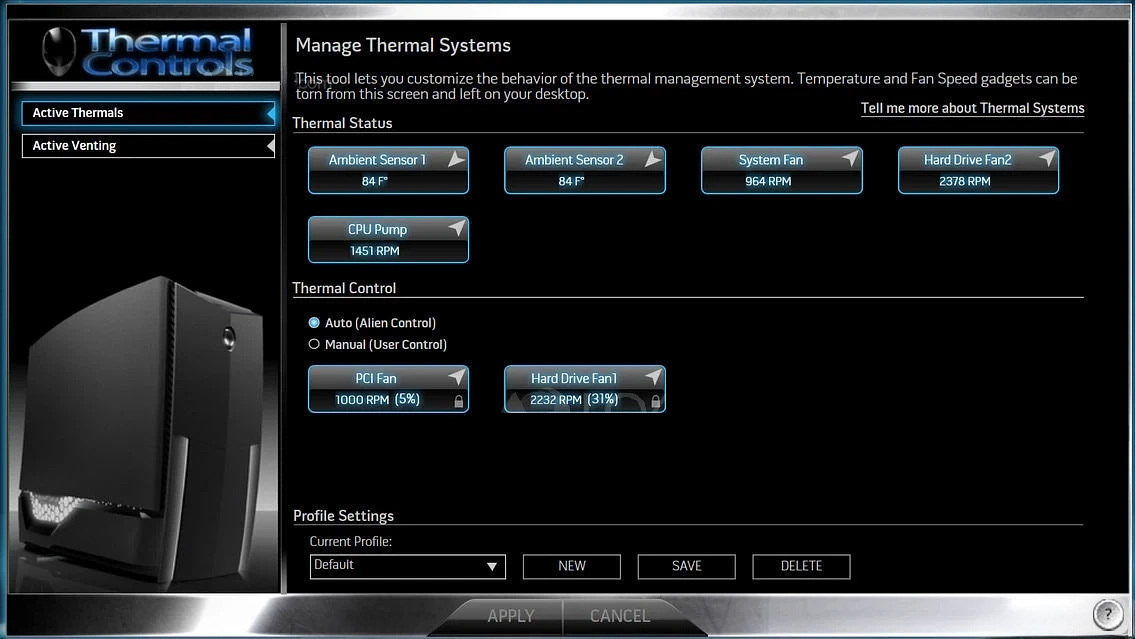
Original Thermal Controls Interface
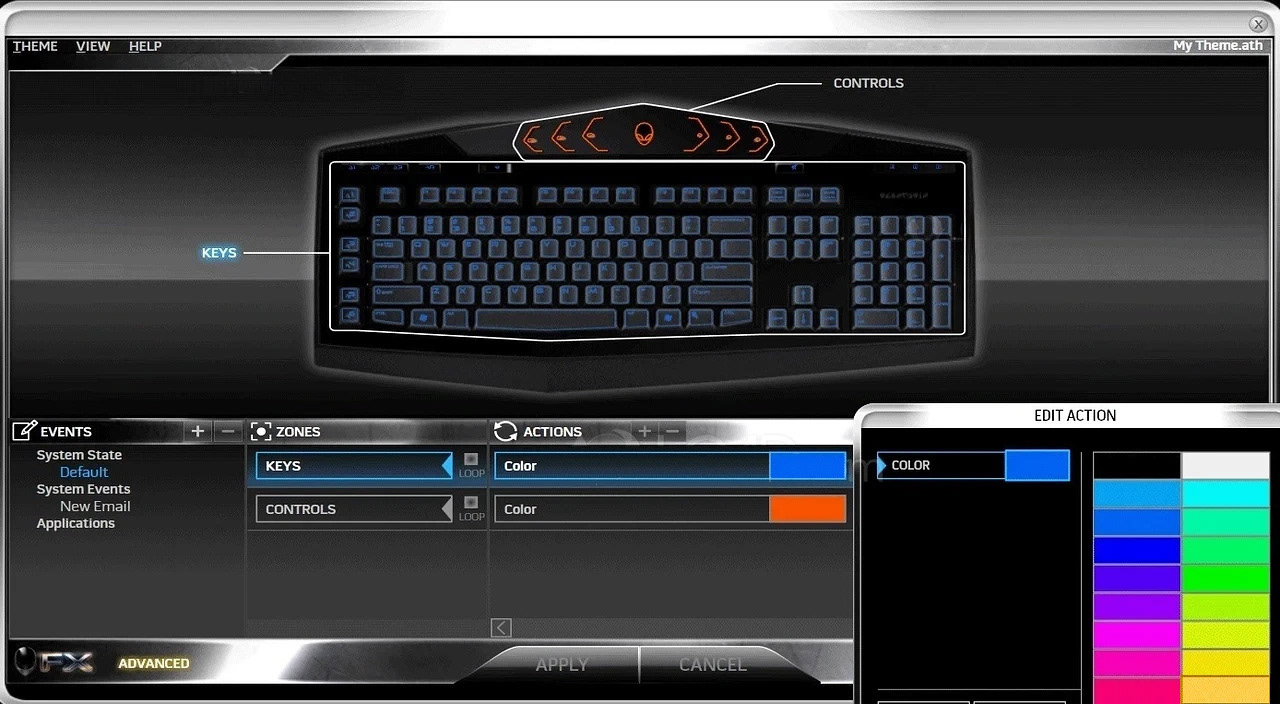
Keyboard Lighting Interface
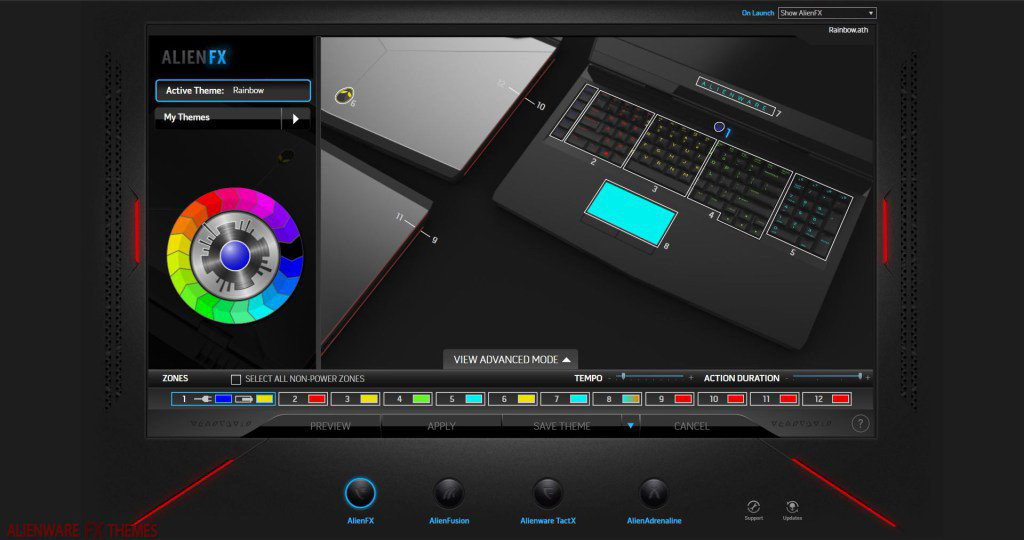
AlienFX - Device Lighting Experience
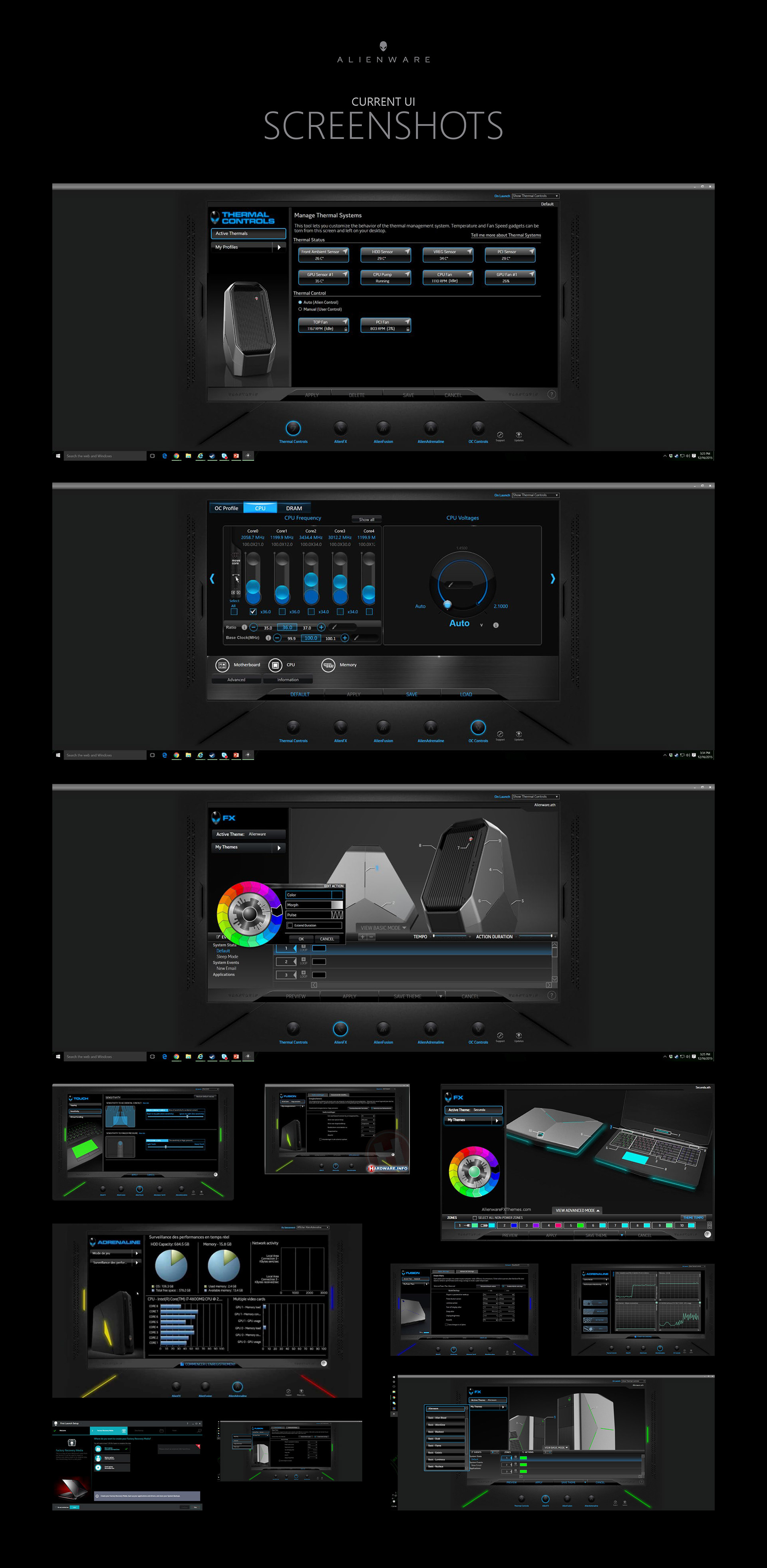
Mood board for Team
My role
Tasked with leading the conceptual overhaul, I coordinated across multiple teams: industrial designers developing next-generation hardware and peripherals, the primary development team in Miami, a Singapore-based team handling BIOS integration, and Dell's broader Experience Design Group (EDG).
Requirements Gathering & Whiteboarding
Before beginning design work, I prioritize gathering comprehensive details and understanding project complexities. I worked closely with the product manager and development teams to identify hardware constraints and document pain points with the existing product.


Hand-drawn early wireframes
A holdover from my days in advertising, I love to start with hand-drawn wireframe sketches as they tend to force me to think through problems early and help me get into the groove of a project.


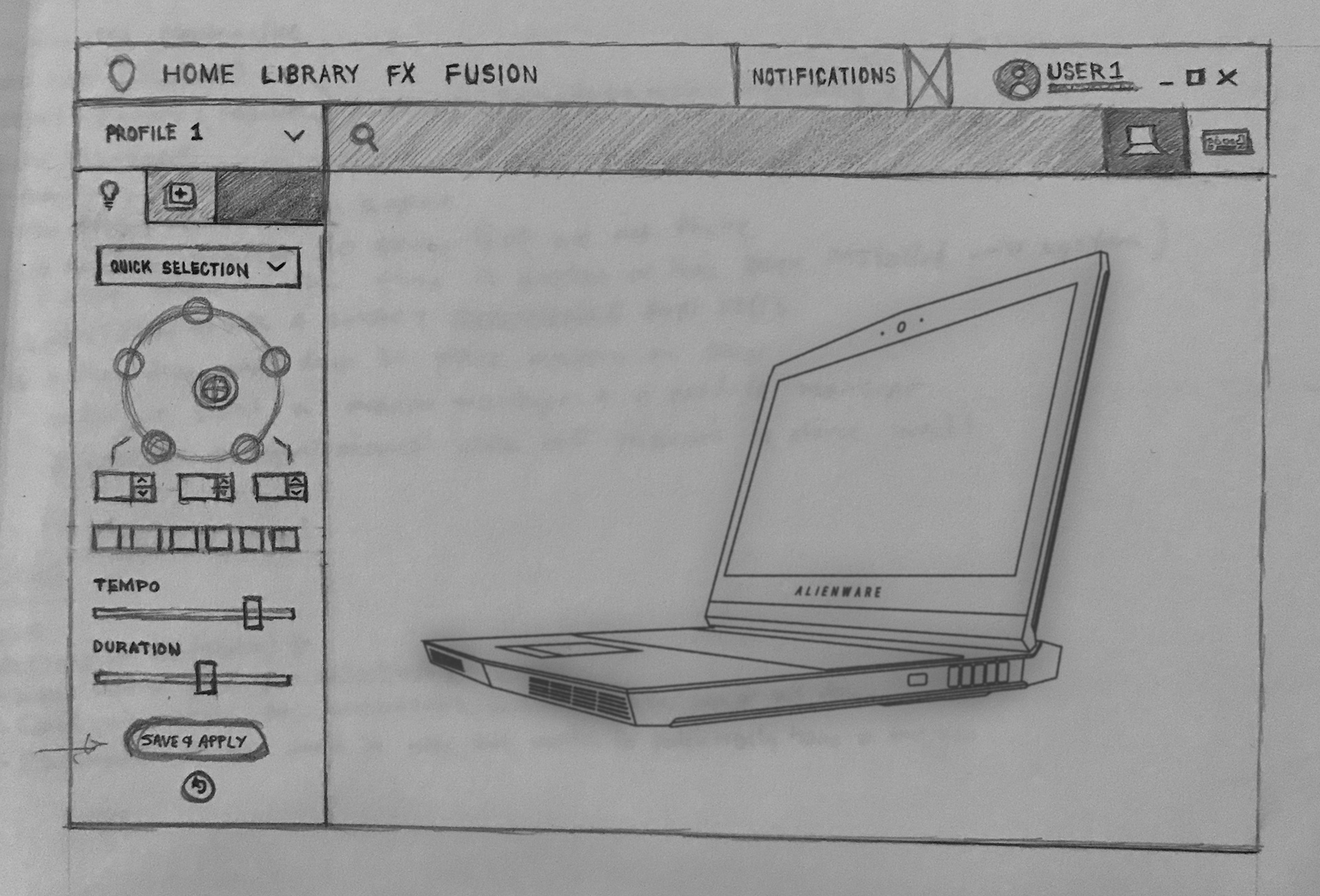
Competitive Review
Understanding the current market landscape is essential at the start of any major project. While competitors' roadmaps remain hidden, analyzing existing products helps avoid unintentional similarities that could undermine our ability to differentiate in a saturated market. I also wanted to equip my design colleagues with comprehensive insights for an internal design competition.
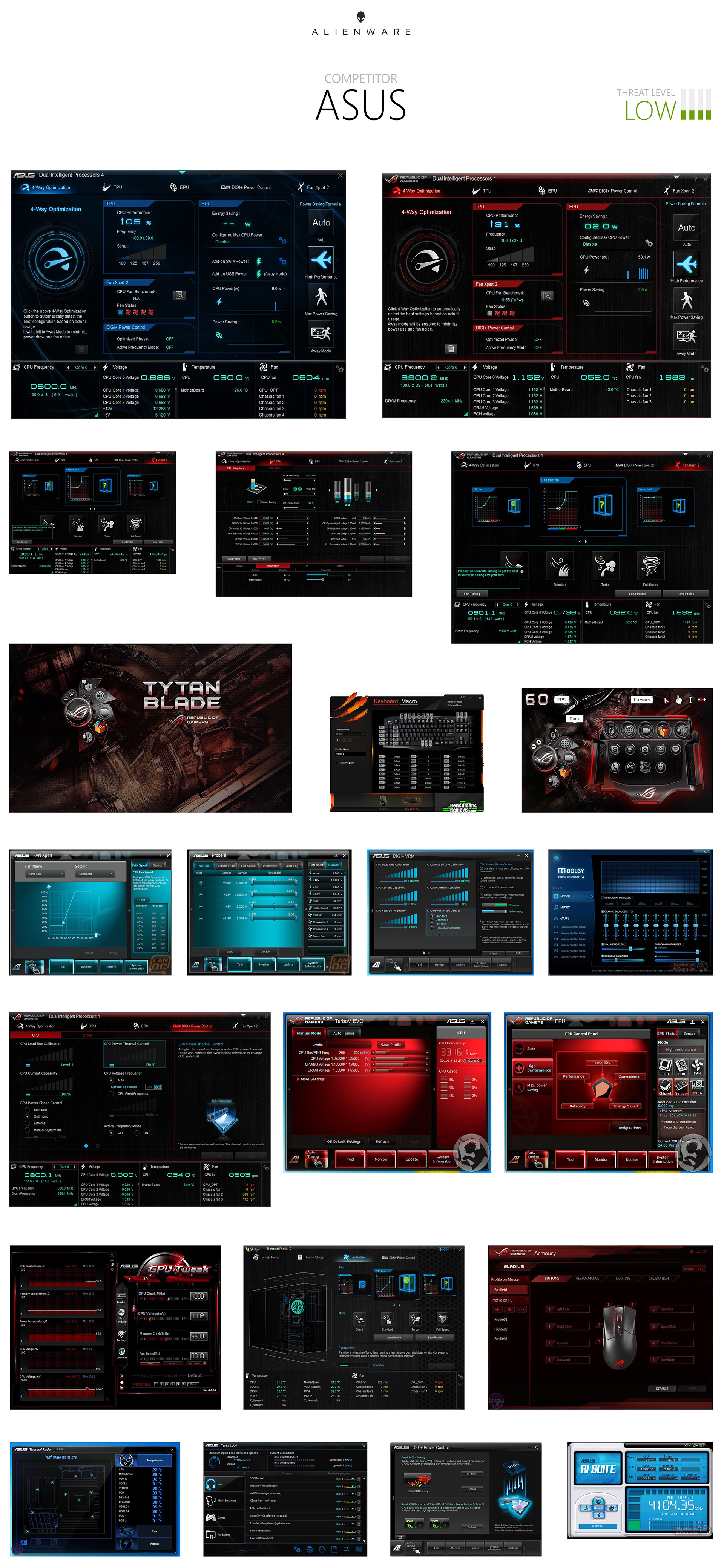
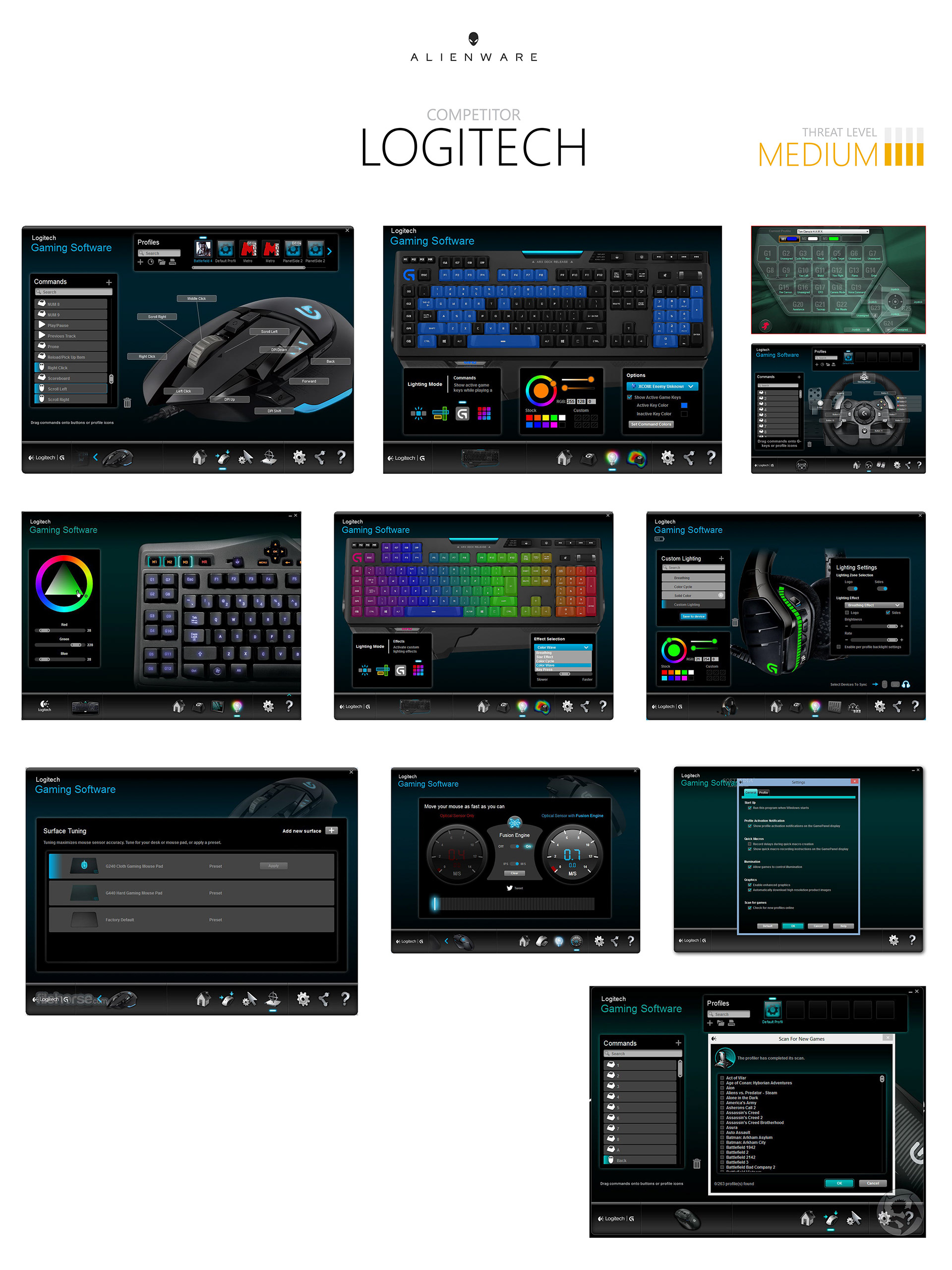
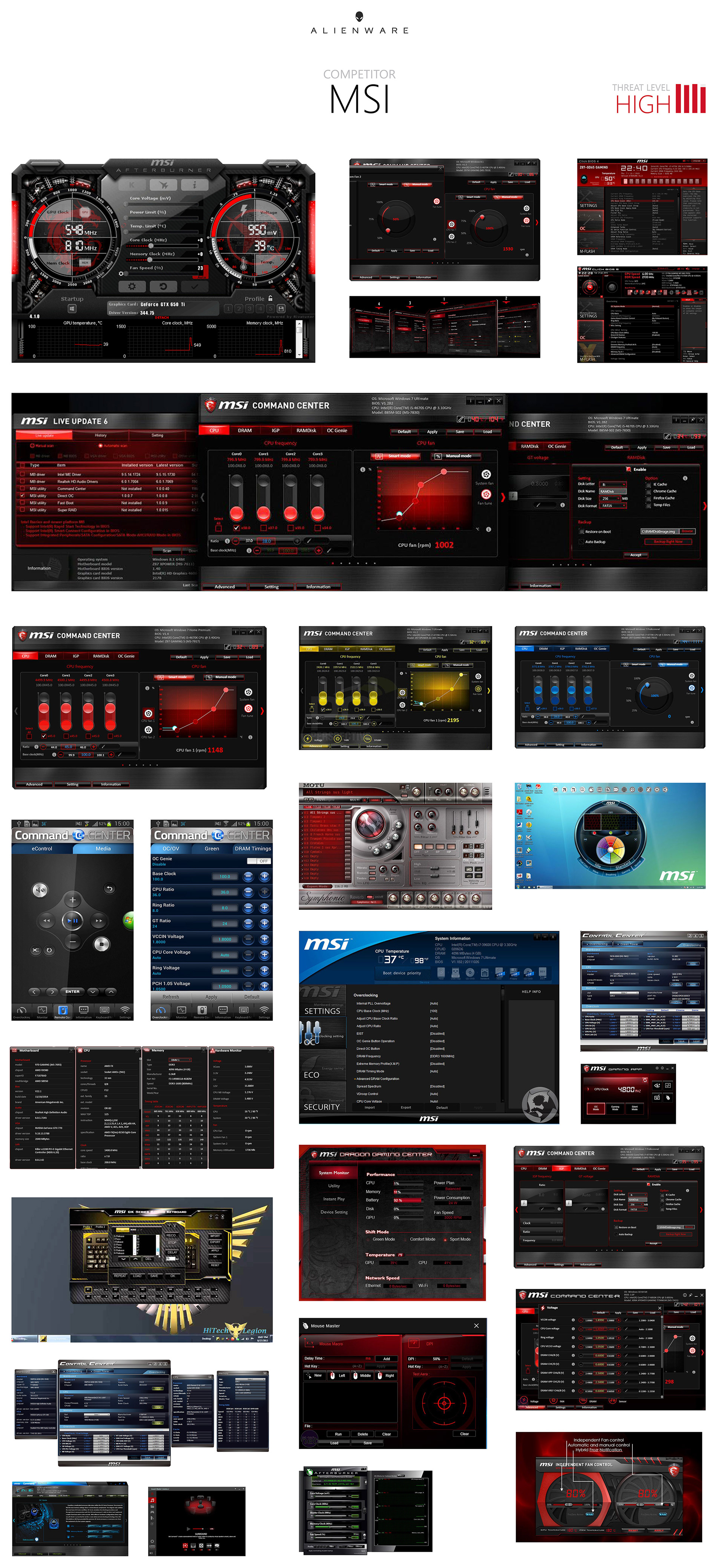
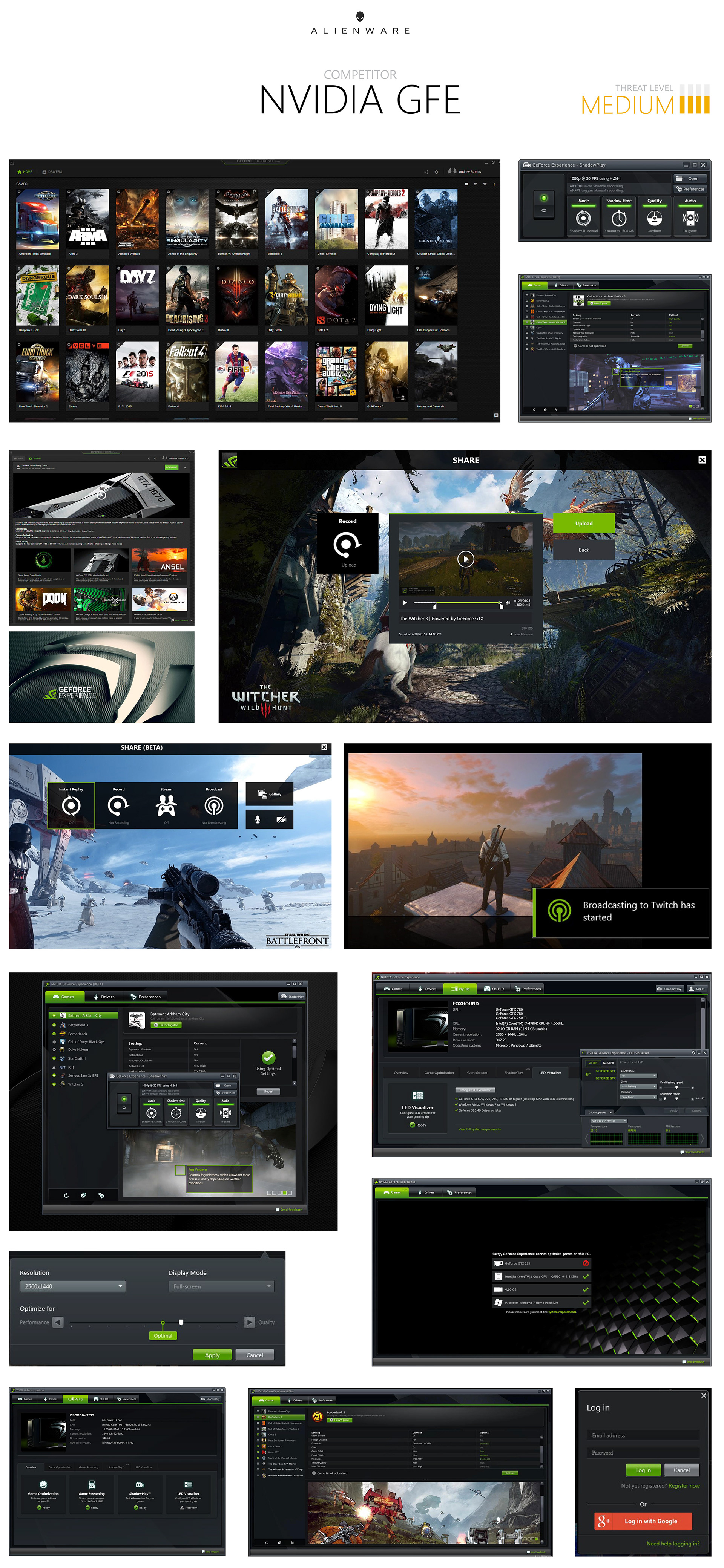
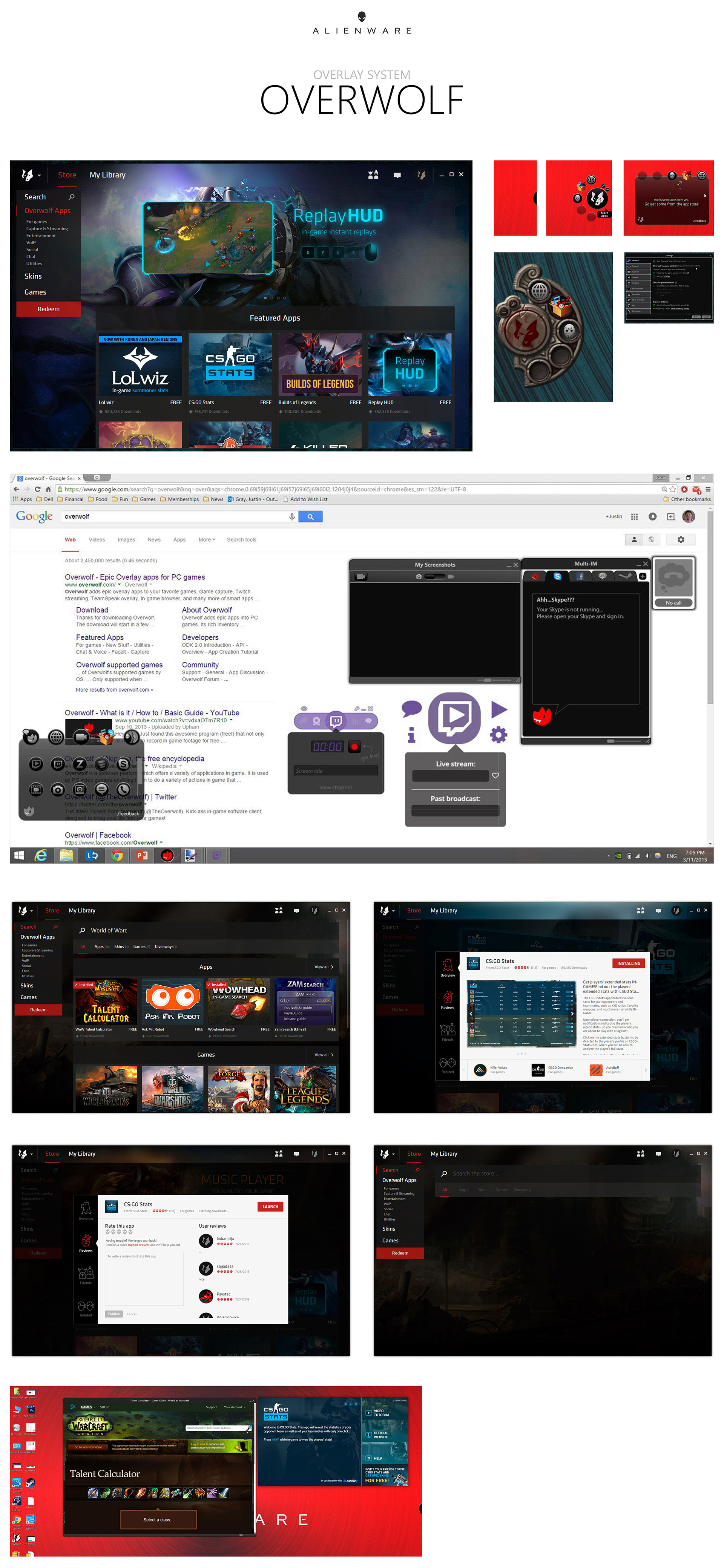
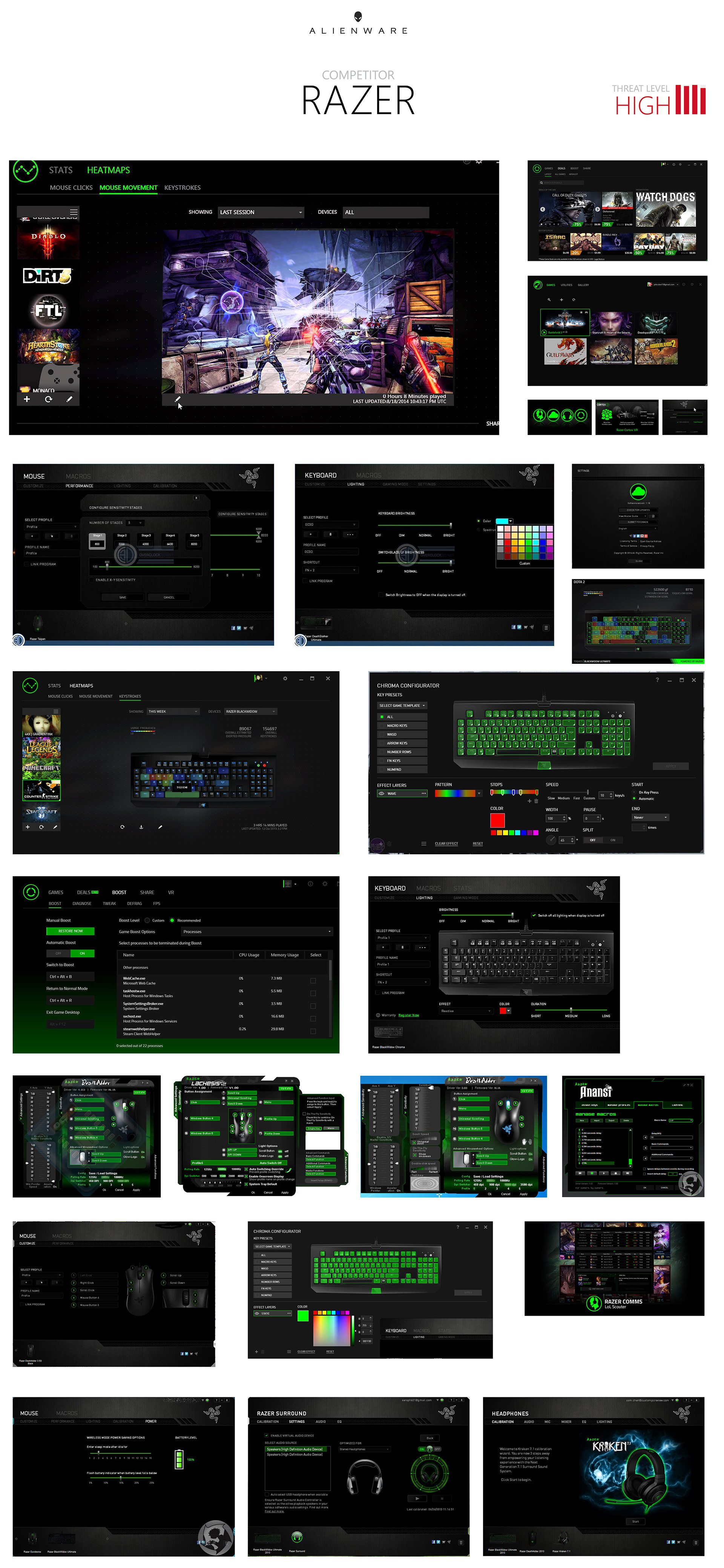
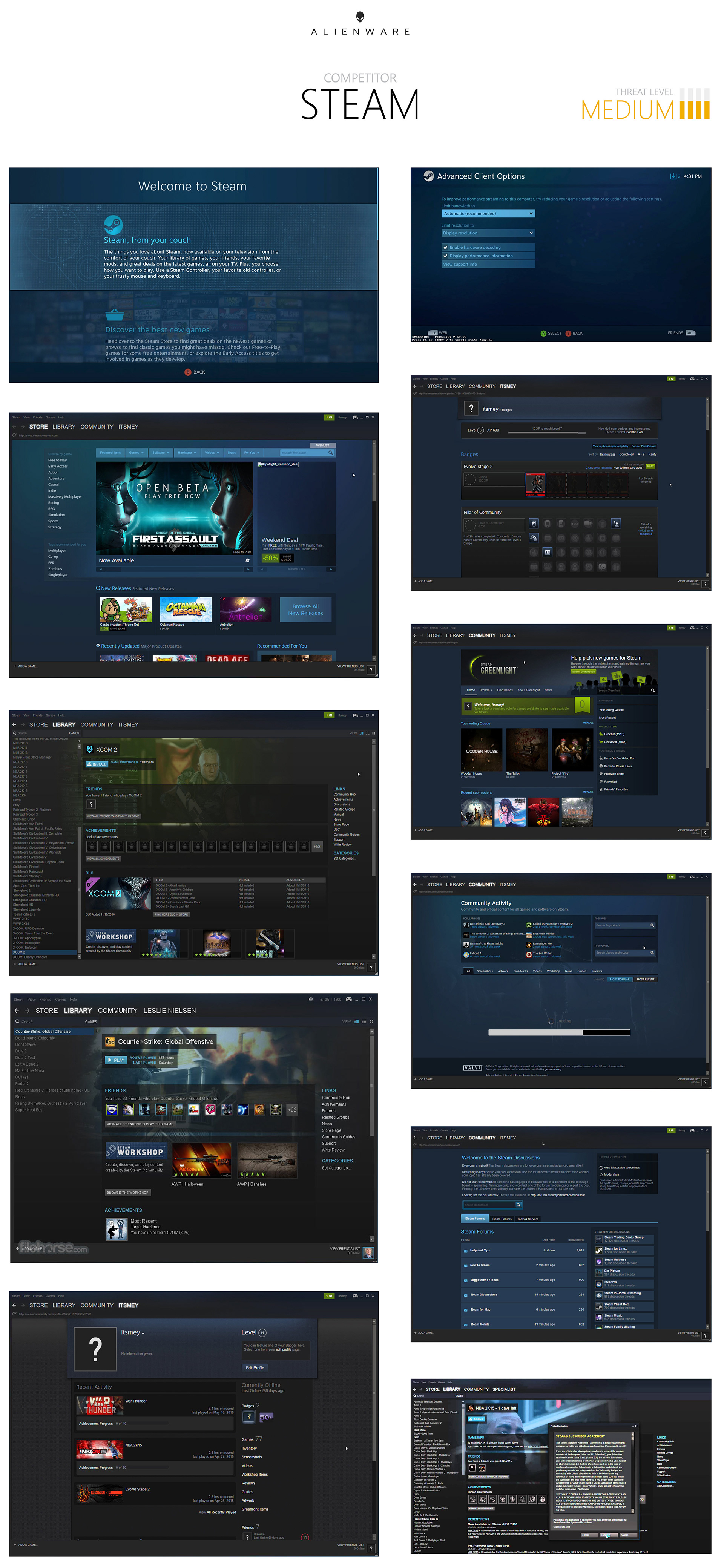
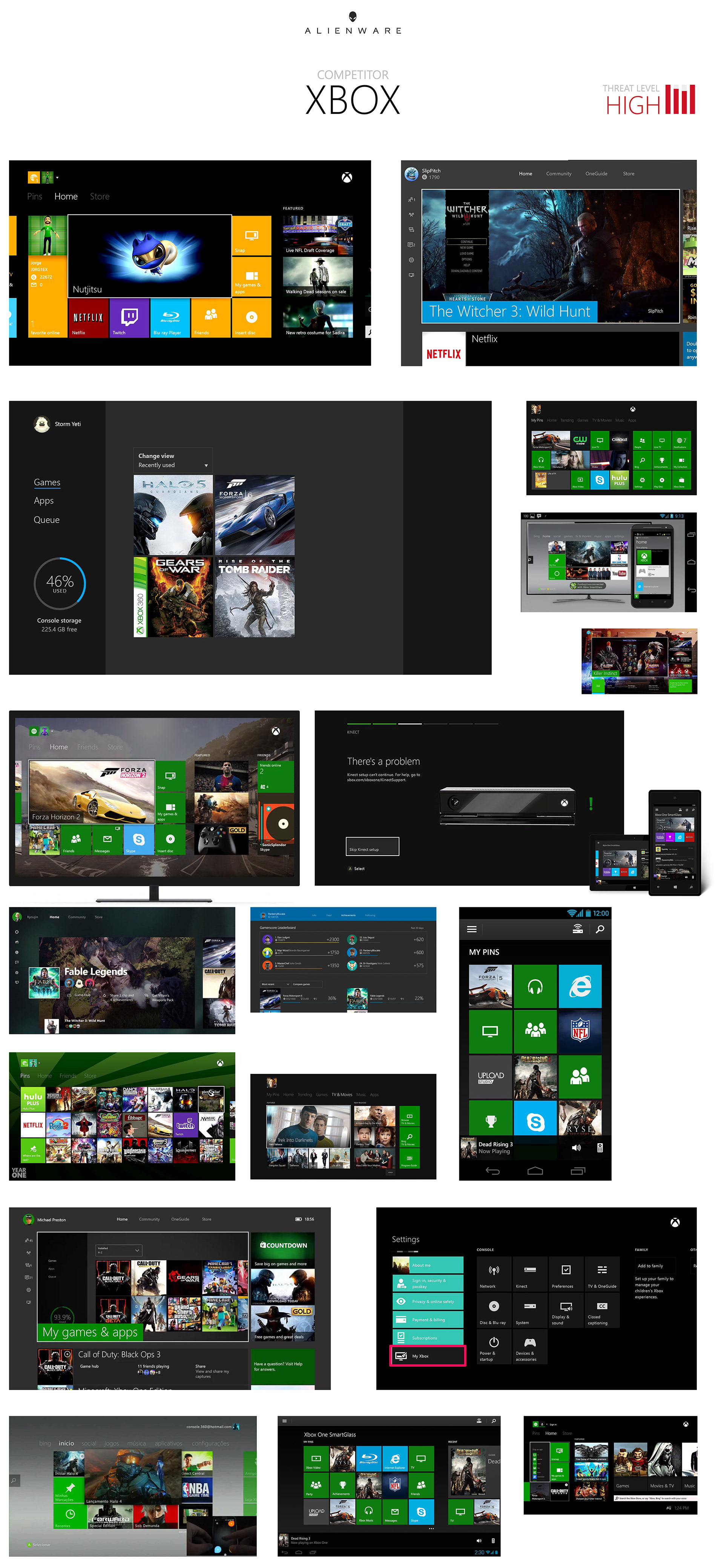
Internal design competition
The Alienware redesign generated significant internal enthusiasm, with numerous designers eager to contribute their vision for the project. To channel this energy productively, I organized an internal design competition among the 12-15 designers in the Experience Design Group. This approach would both foster team collaboration and surface diverse conceptual directions for the redesign.
To prepare participants, I developed orientation materials including competitive analysis boards, screenshots of the existing application, high-level requirements, and preliminary wireframes—detailed enough to provide context without constraining creative exploration.
The internal competition was a smashing success with prizes handed out and the overall team voting to pick a winner who would receive several Alienware exclusive T-shirts.
Below are some of the entries from the competition.
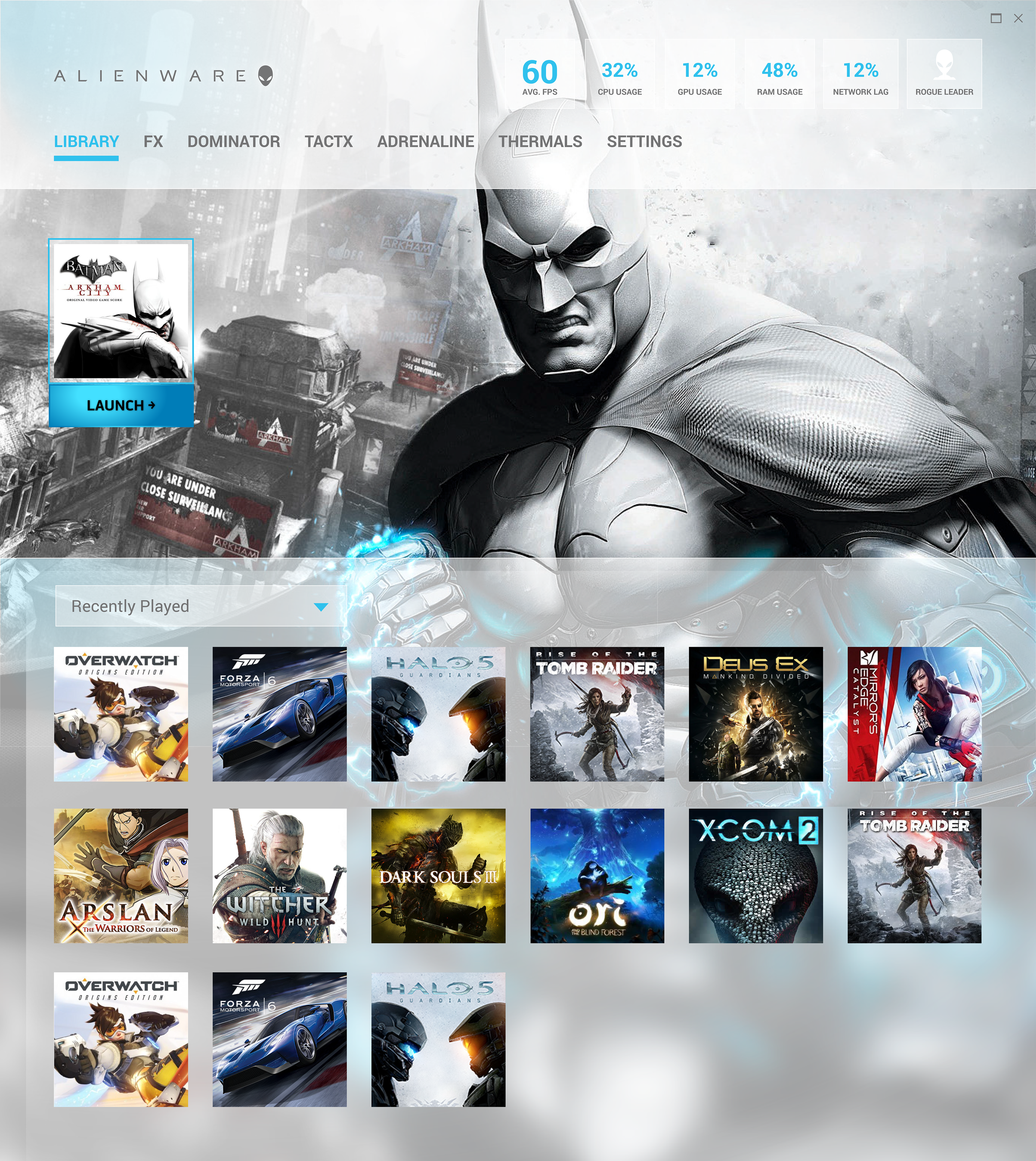
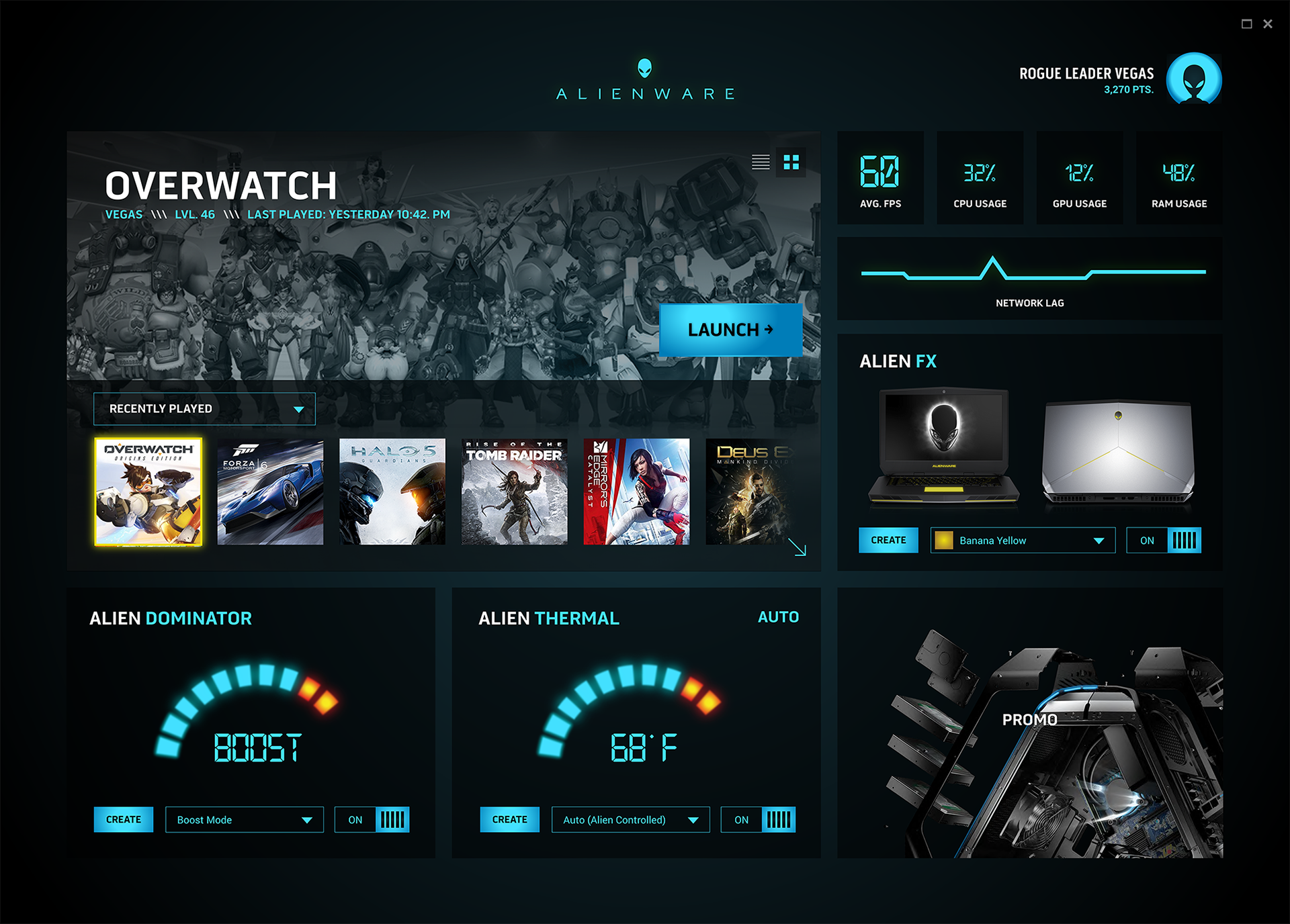
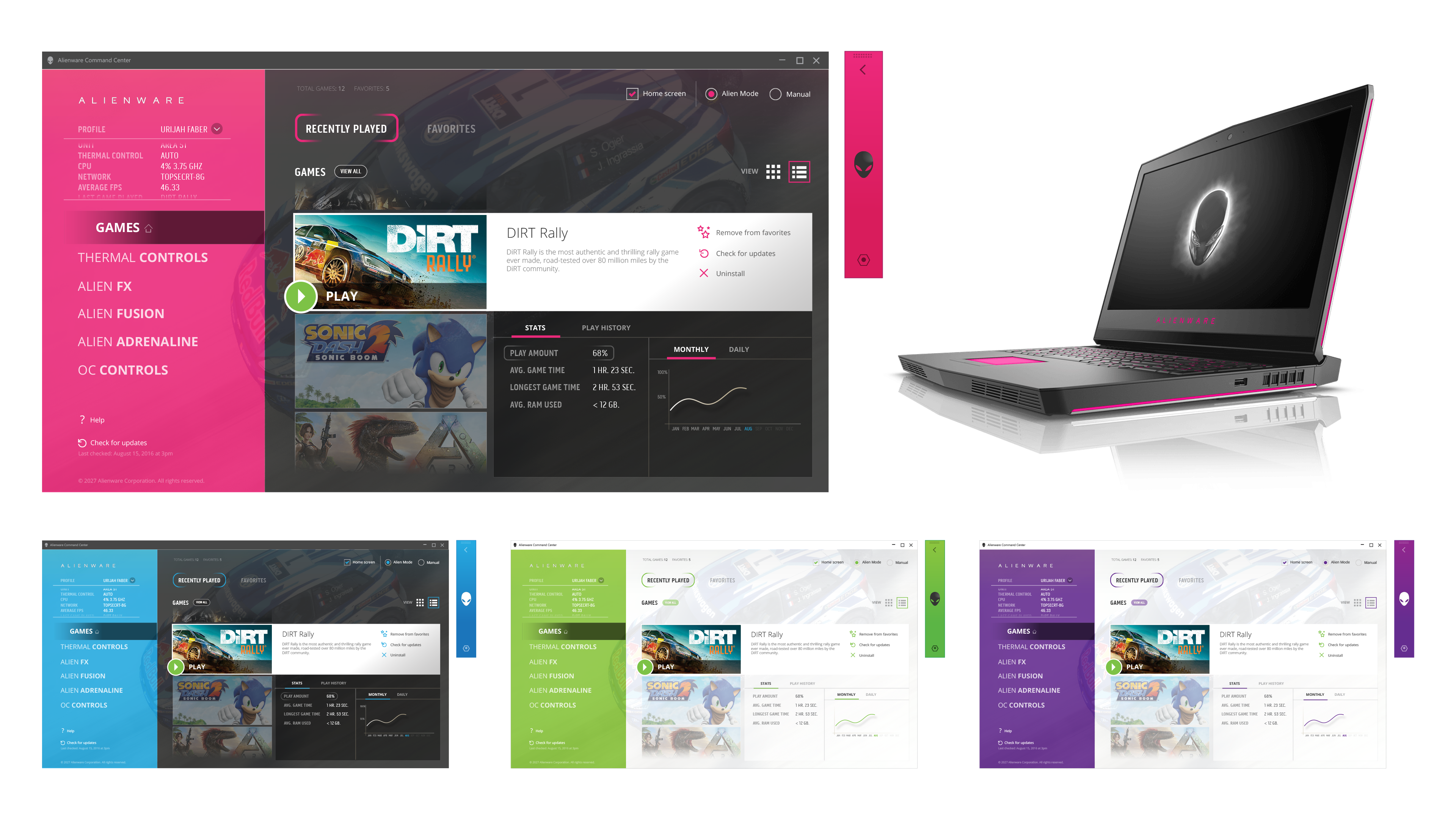
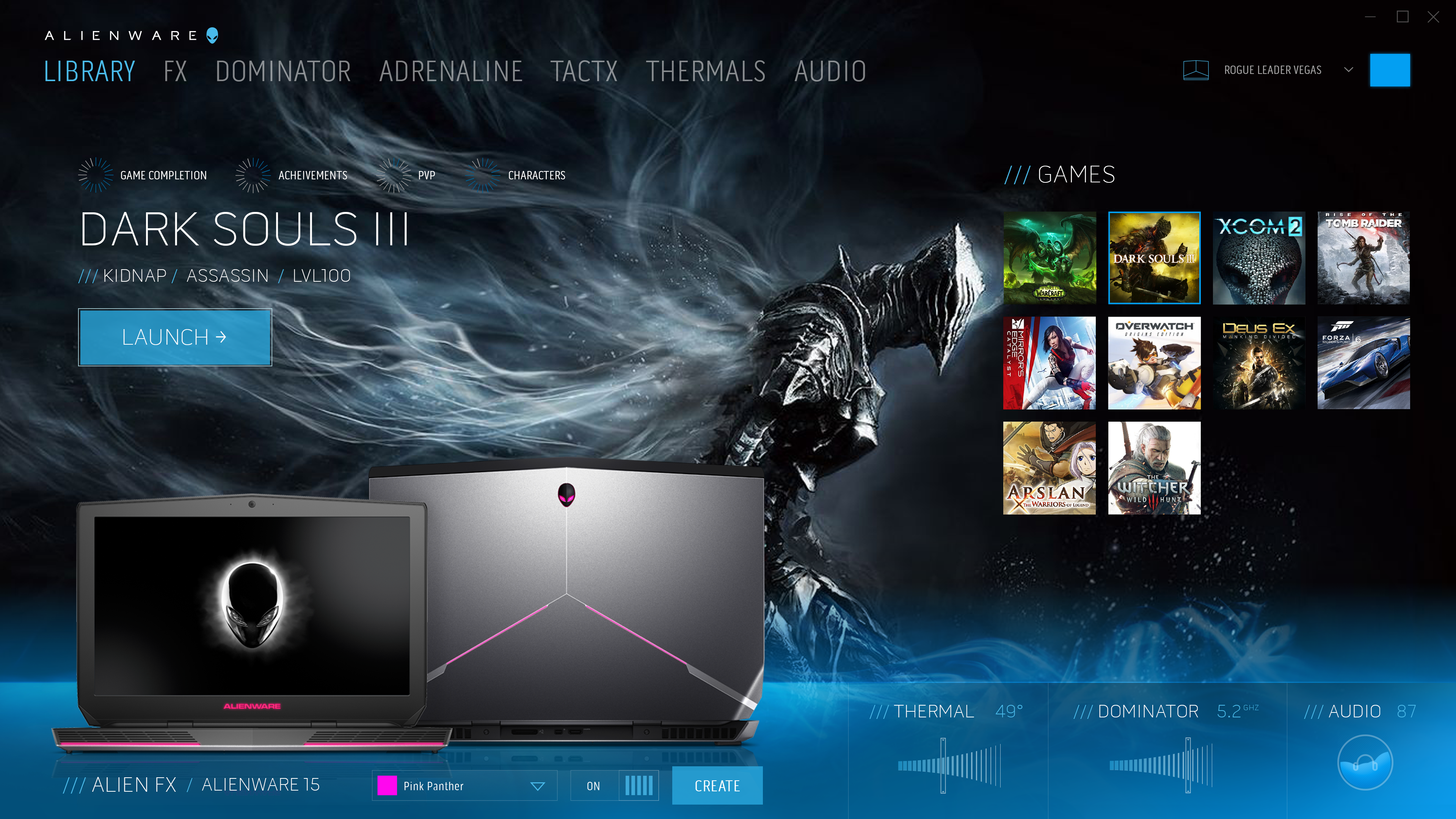
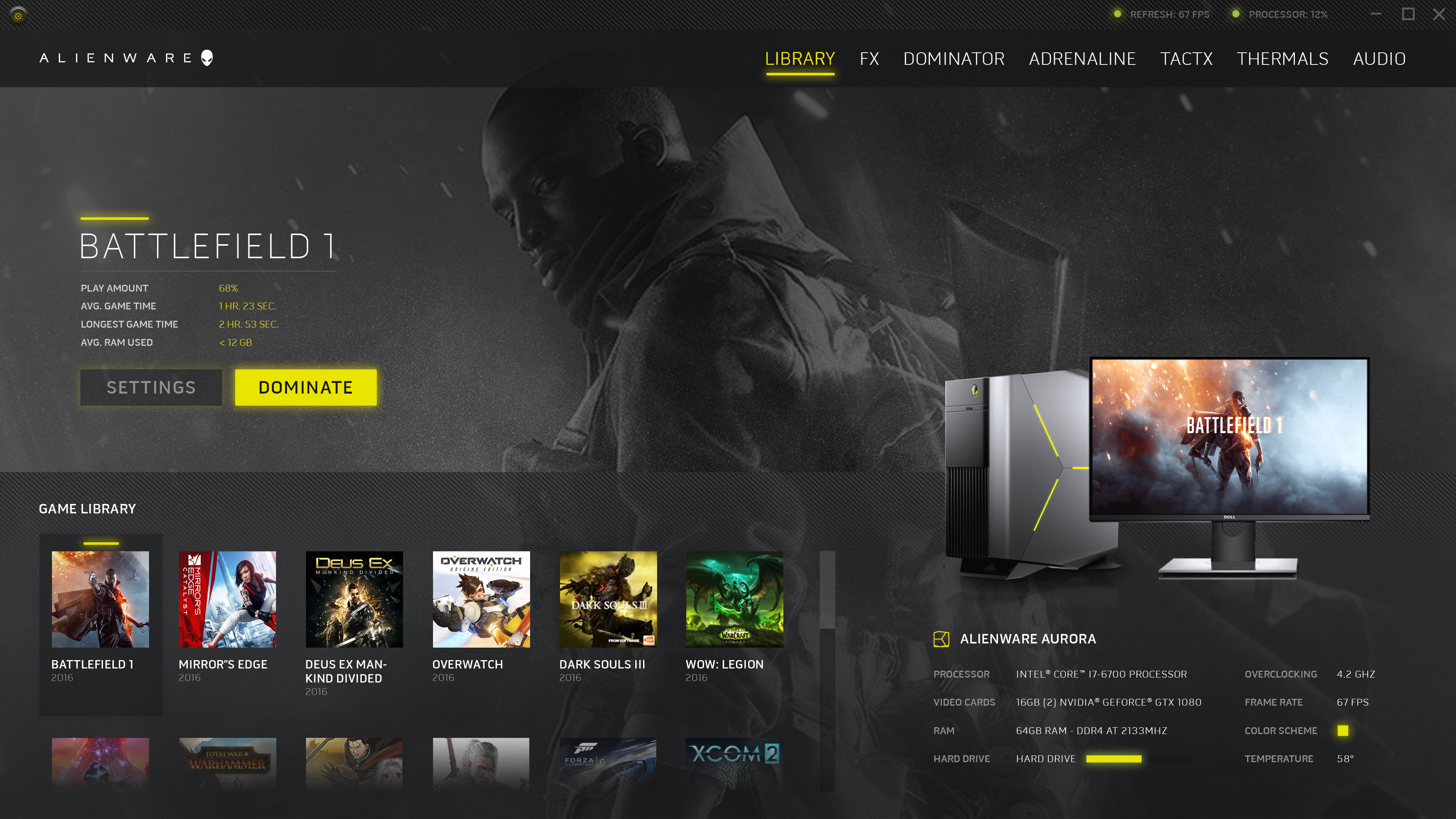
Wireframes
Leveraging the results of the internal competition, we began wire-framing the application in earnest with an overall structure in mind. Due to the rich visuals we had, the wireframes were able to be more complex than we typically began with, helping to speed up the timeline for final delivery.
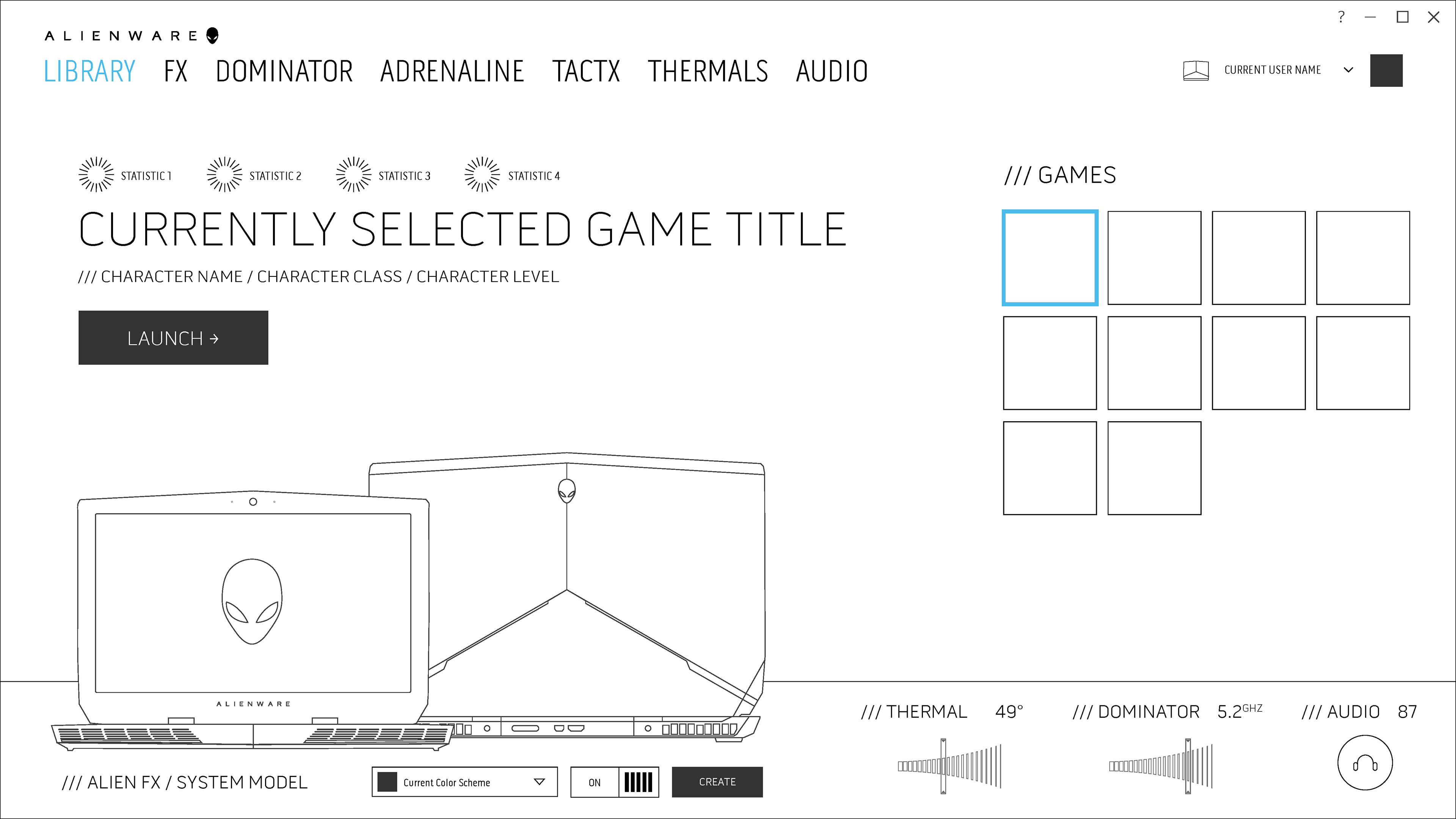
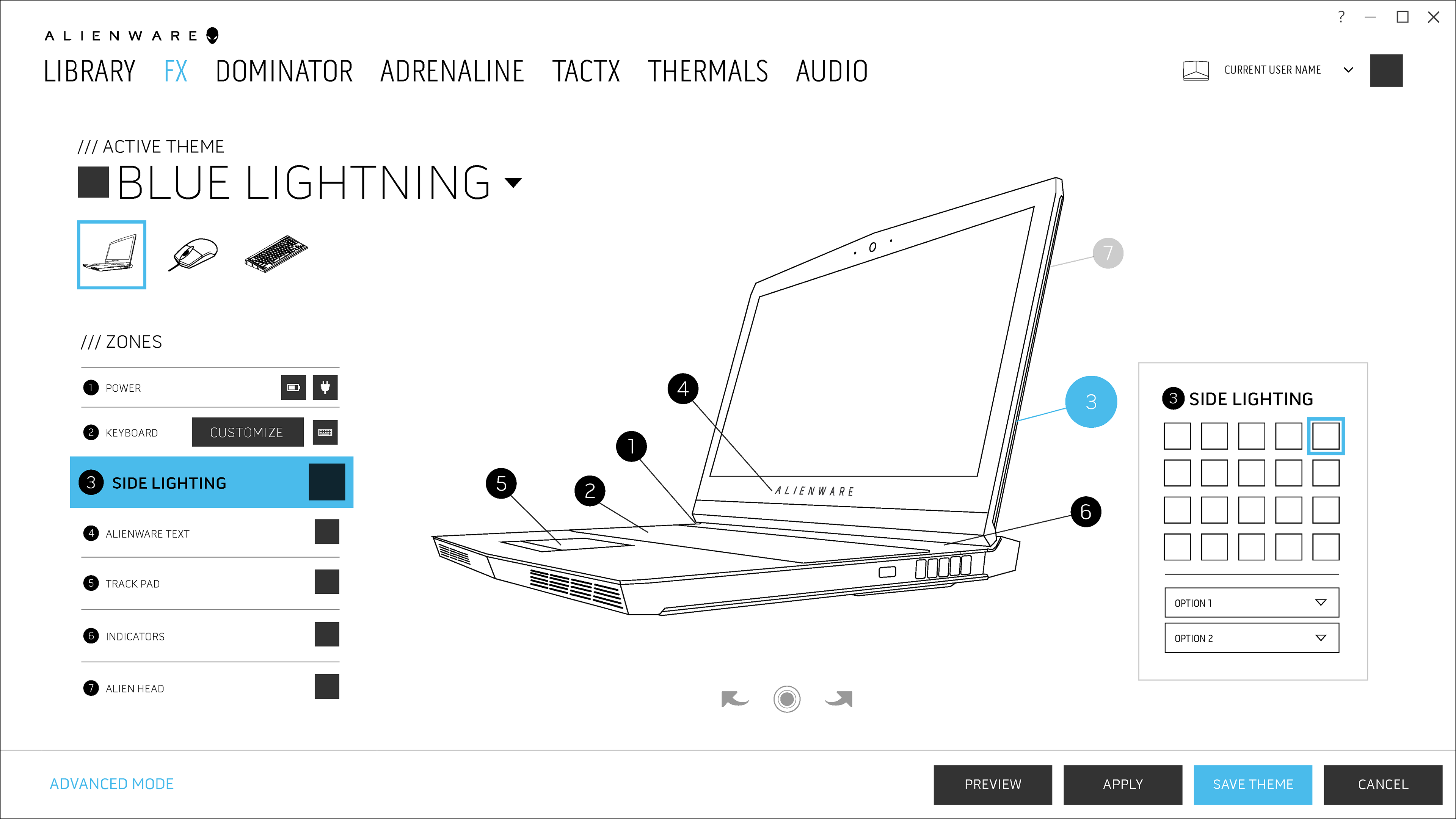
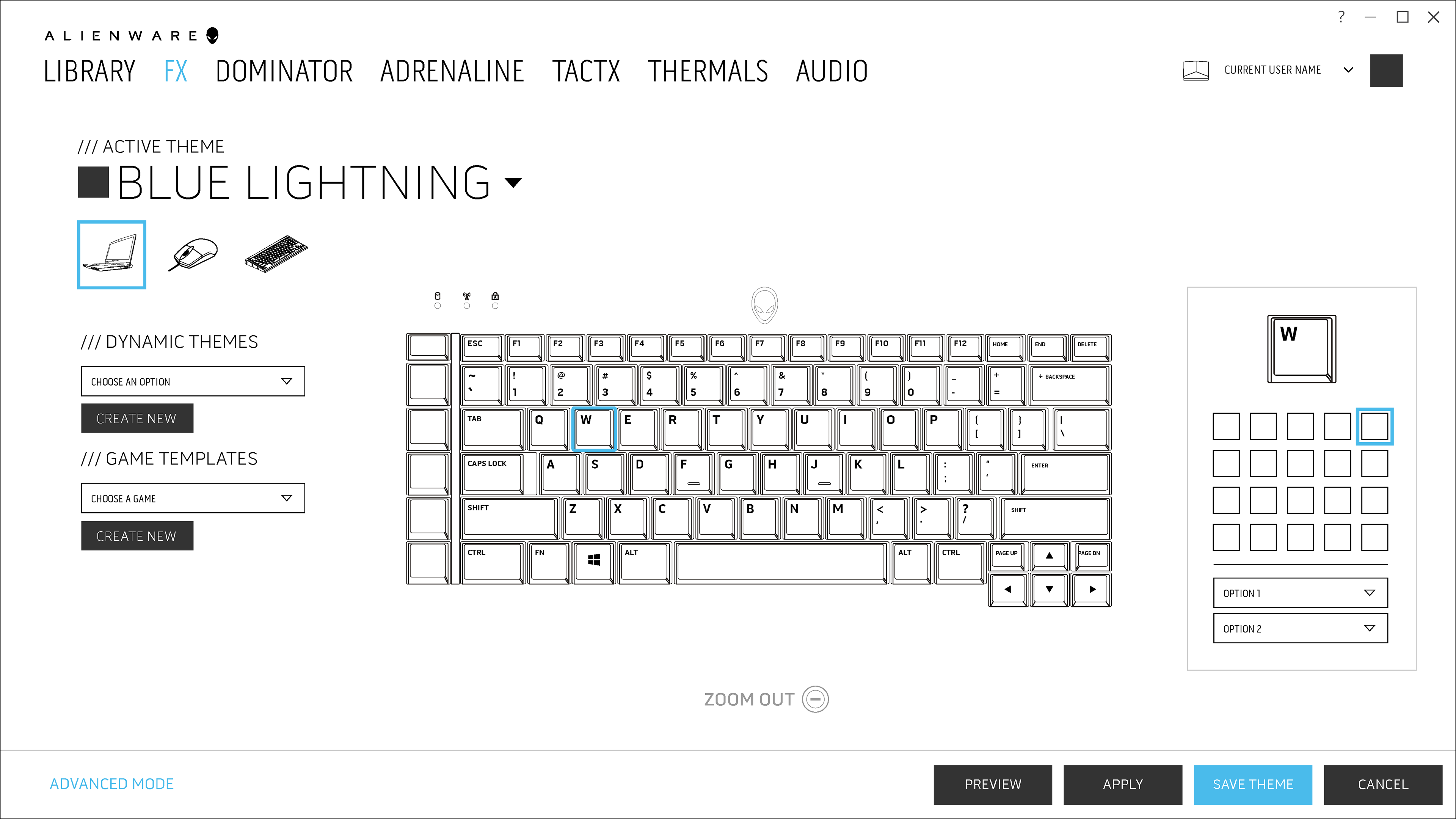
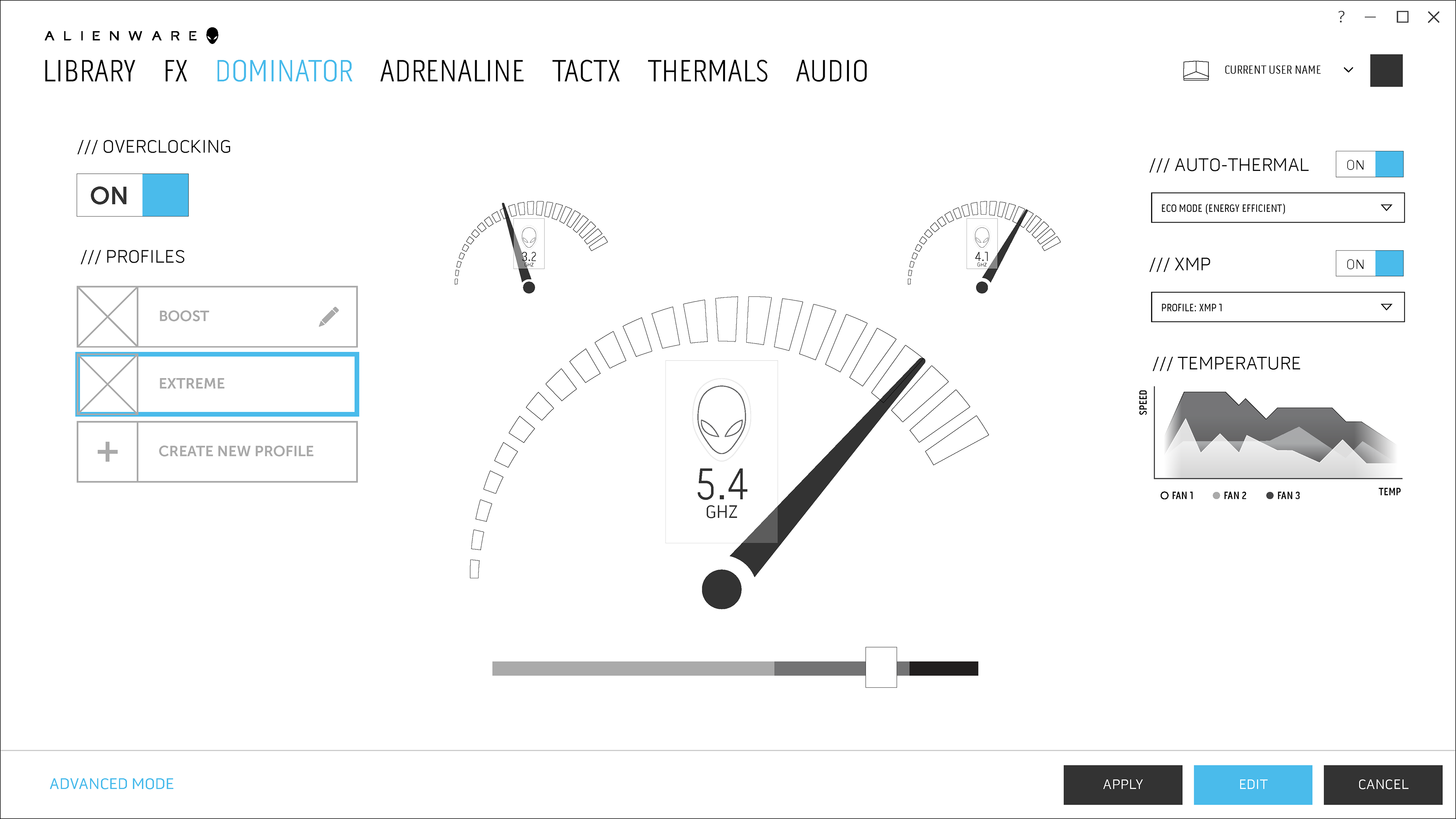
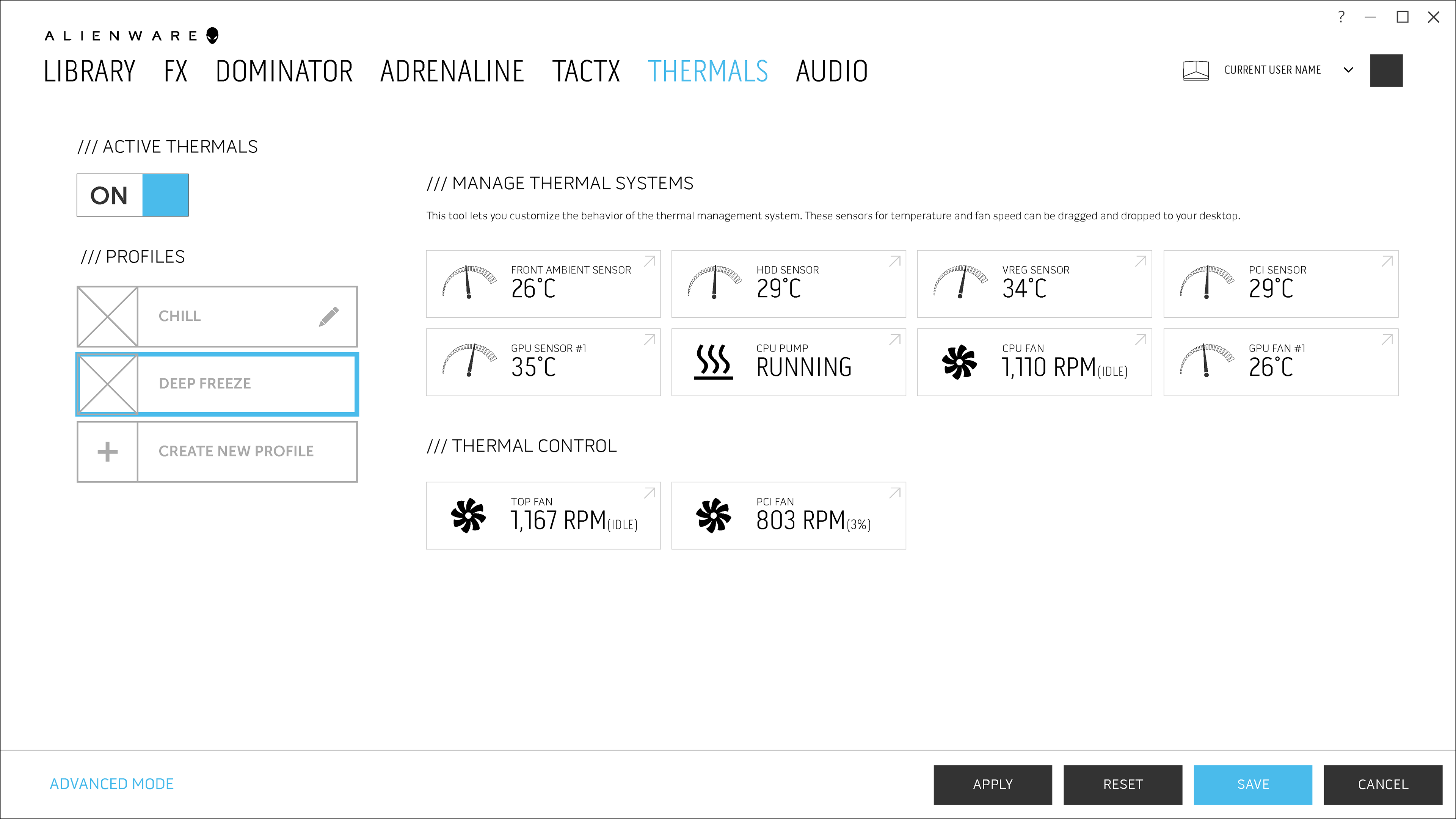
Applying visual design
Given the gaming audience, visual design was critical to the project's success. I led the visual design effort alongside Rich Keneparath, a visual and interaction designer. I focused on the dashboard, library, and FX sections, while Rich owned the Dominator (overclocking), thermal, and audio modules. We ensured both dark and light modes delivered equally polished experiences with seamless transitions between them.
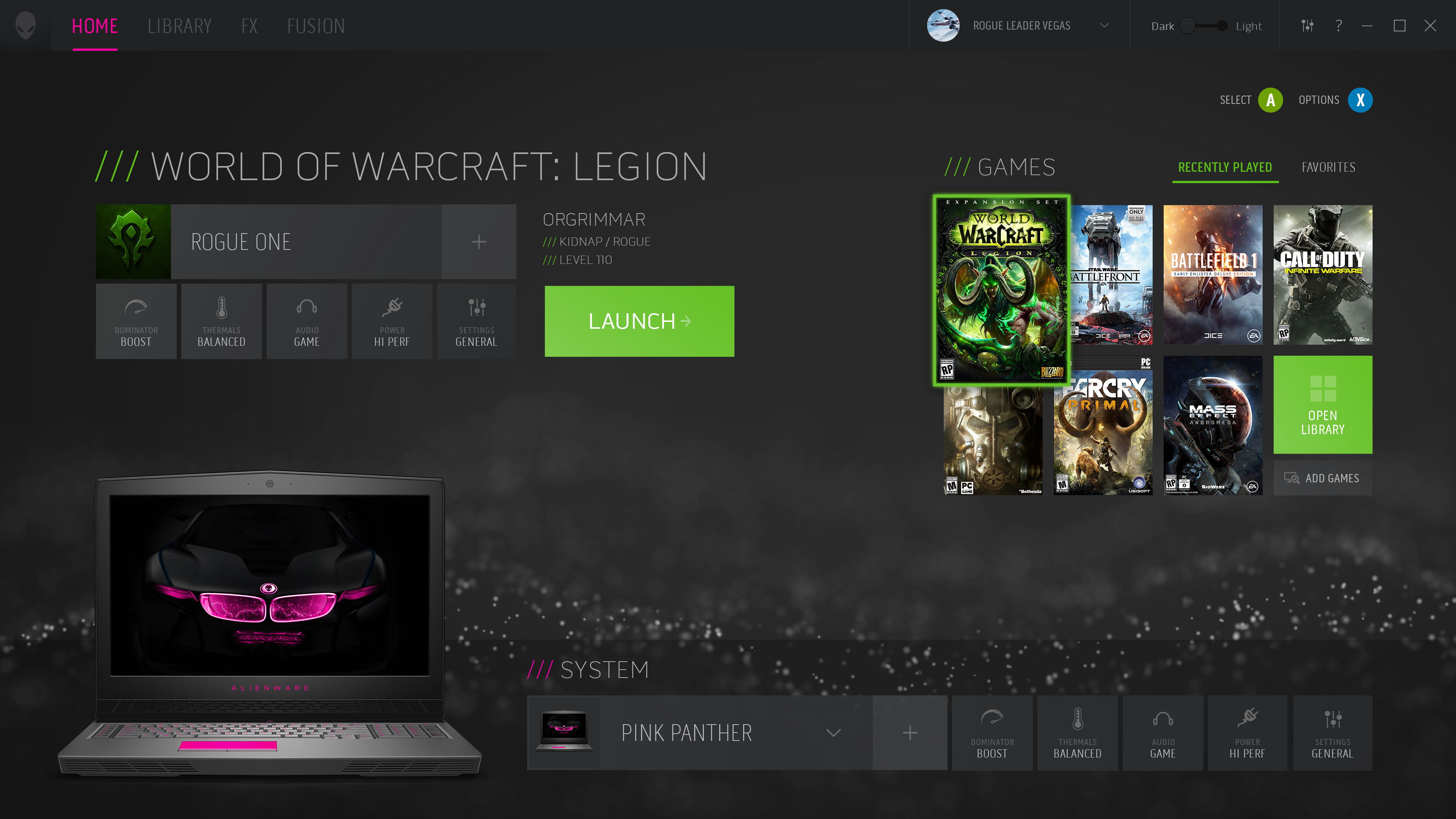
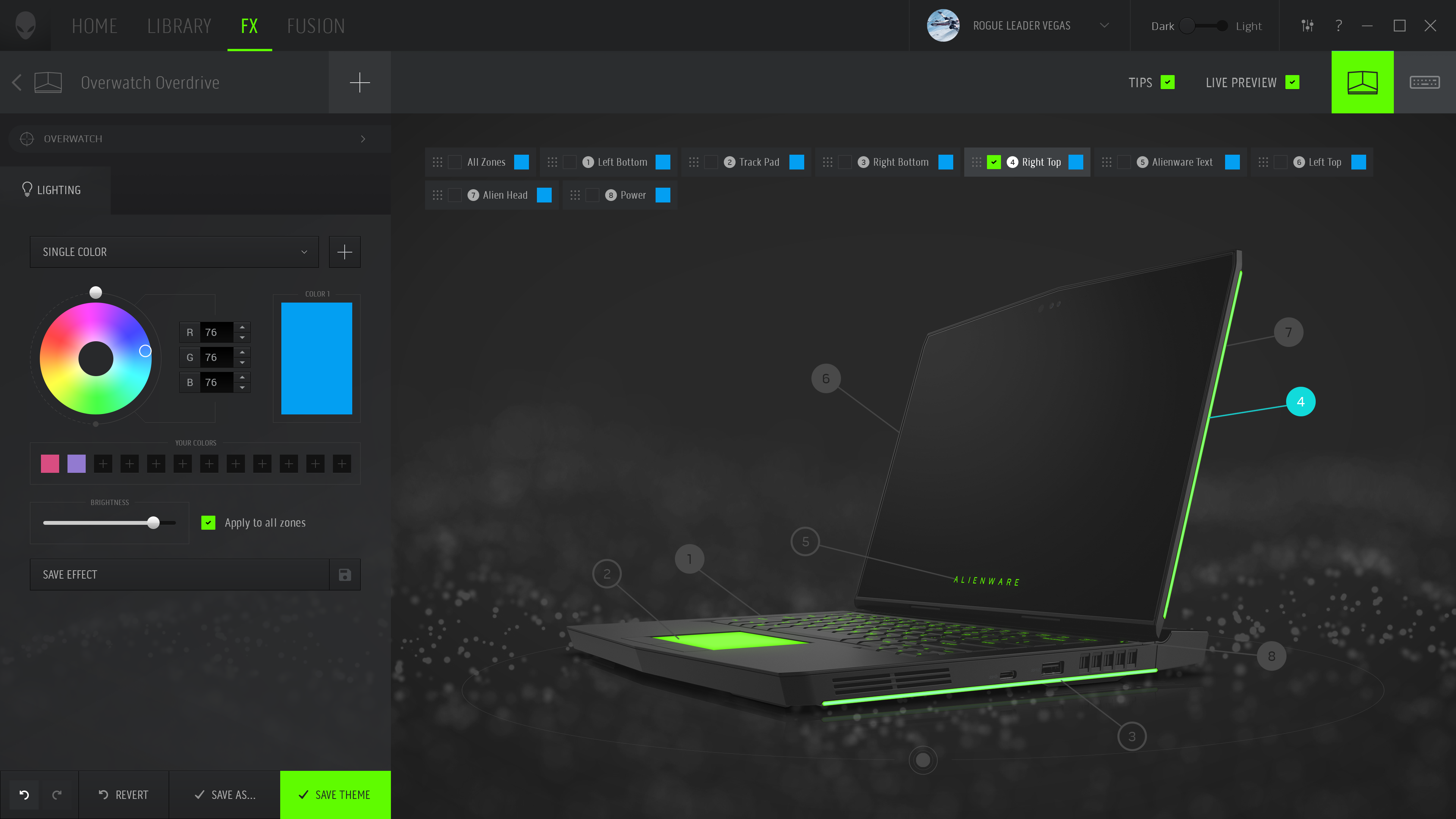
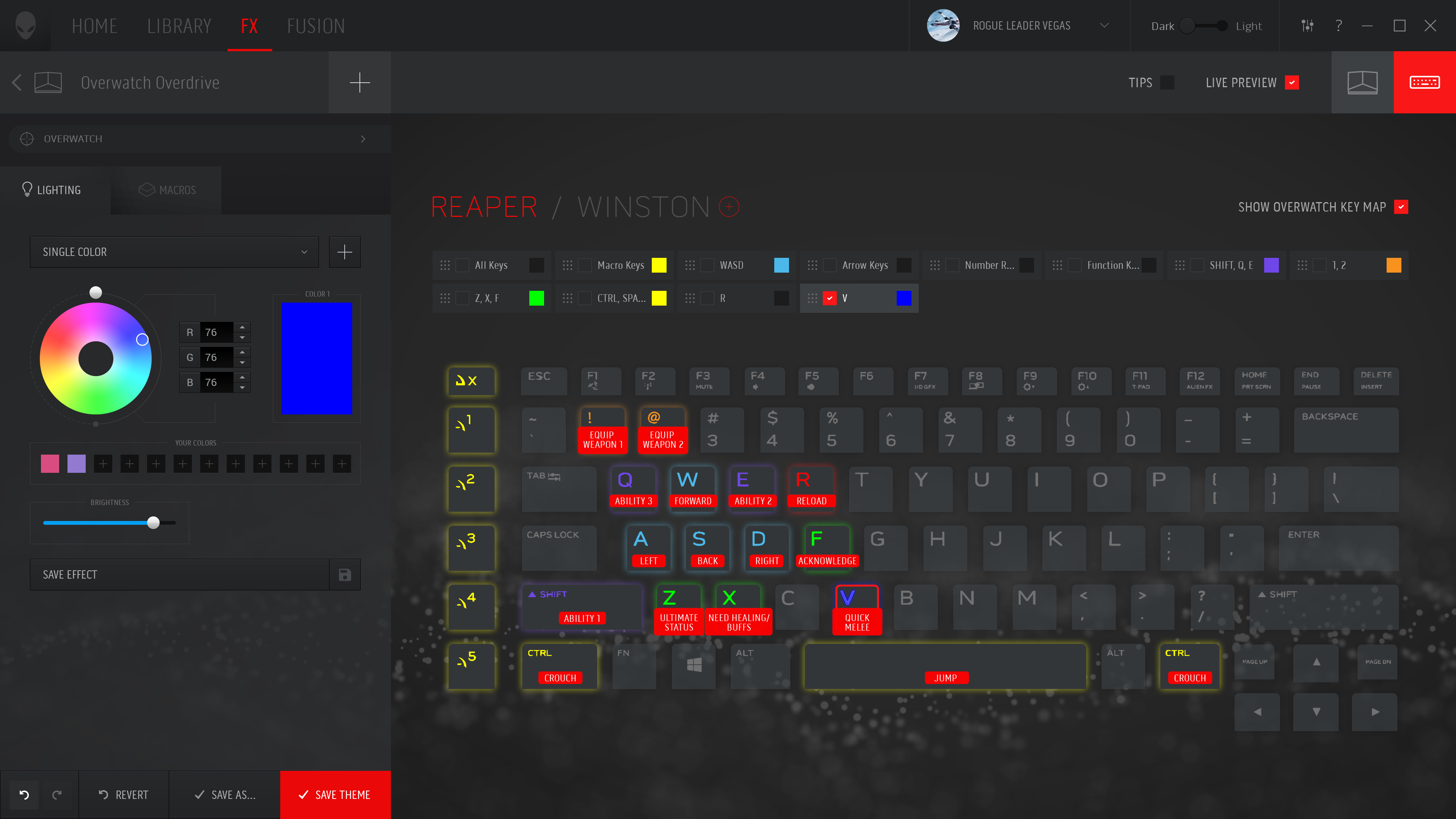
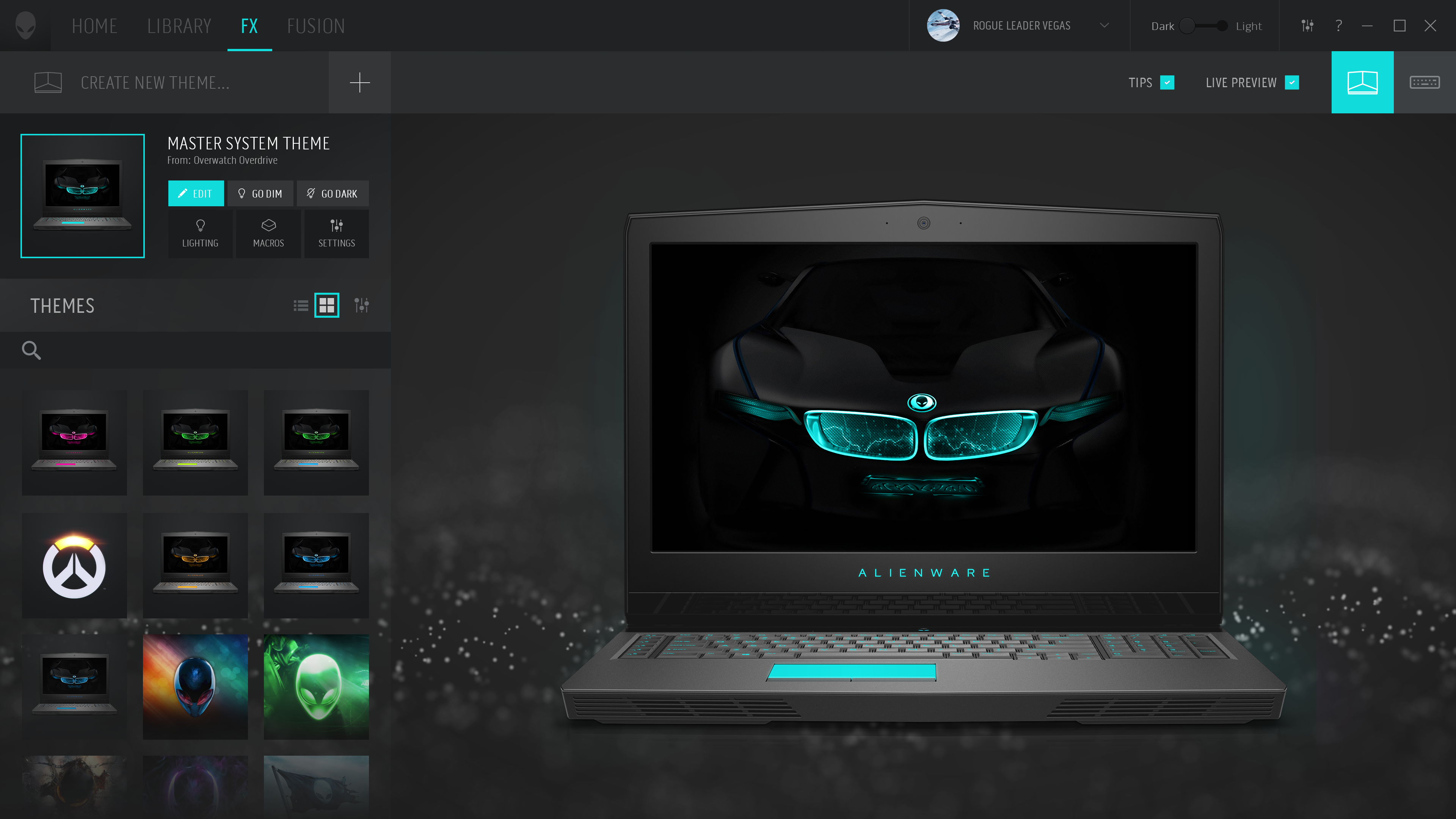
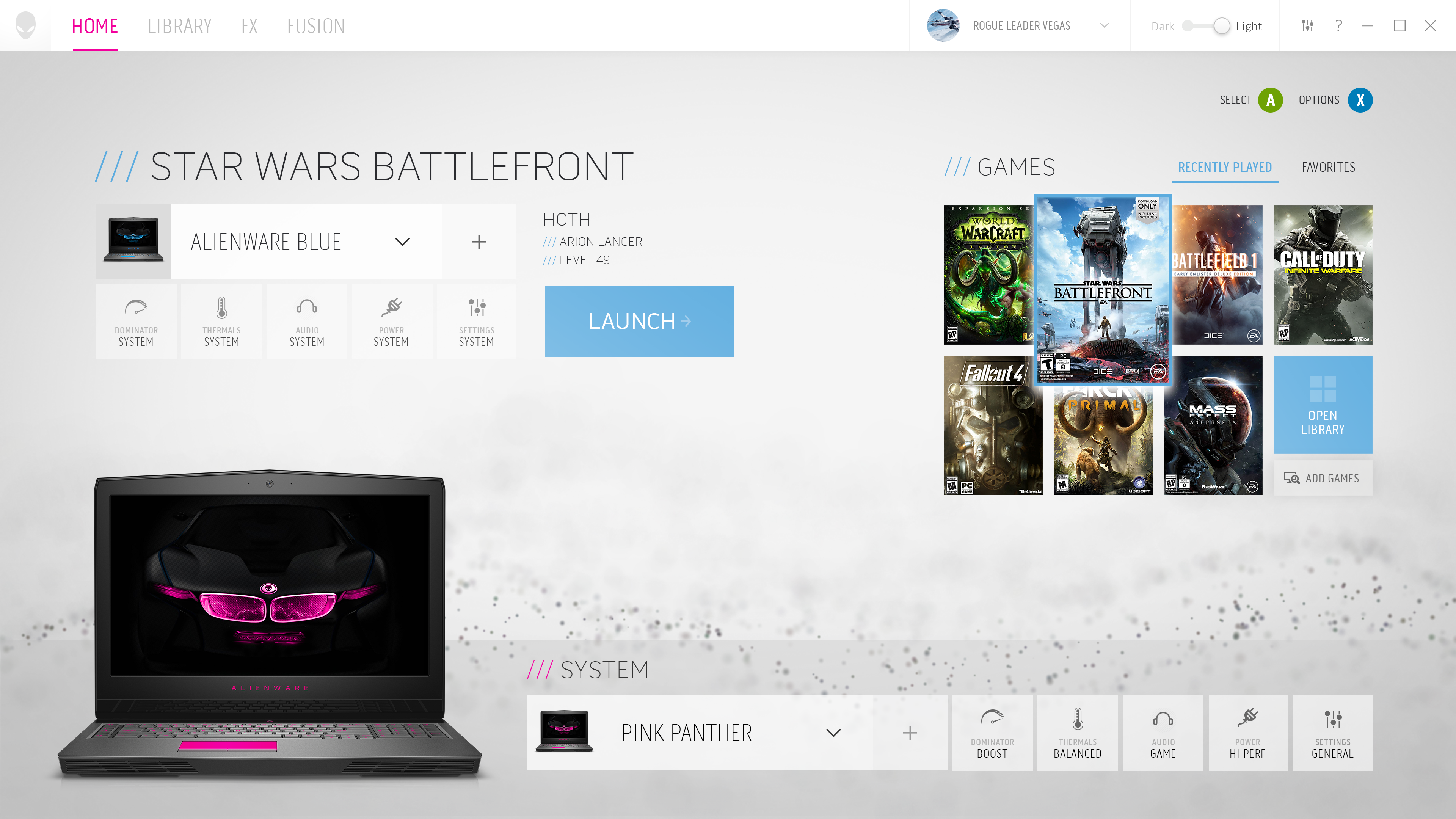
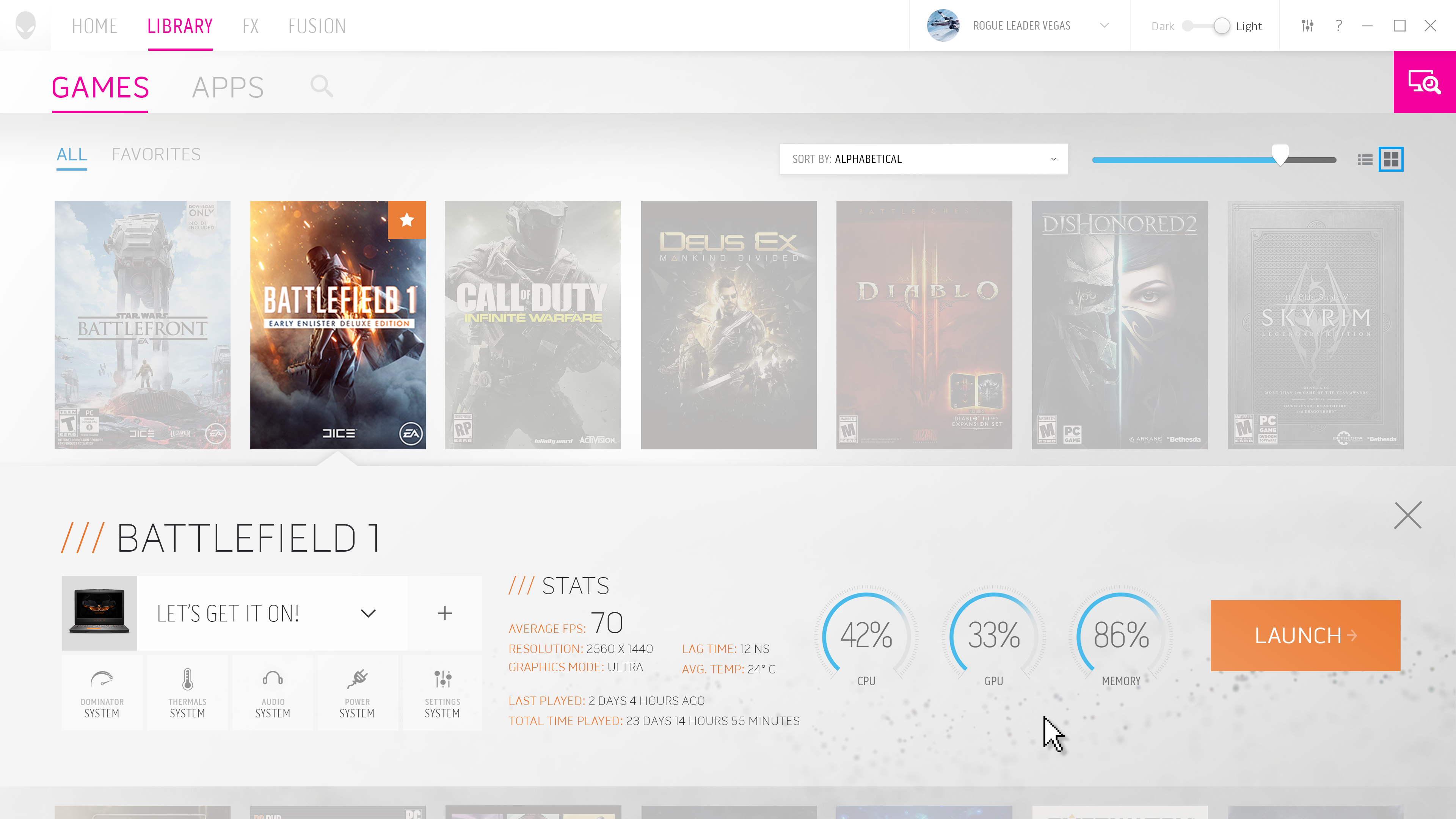
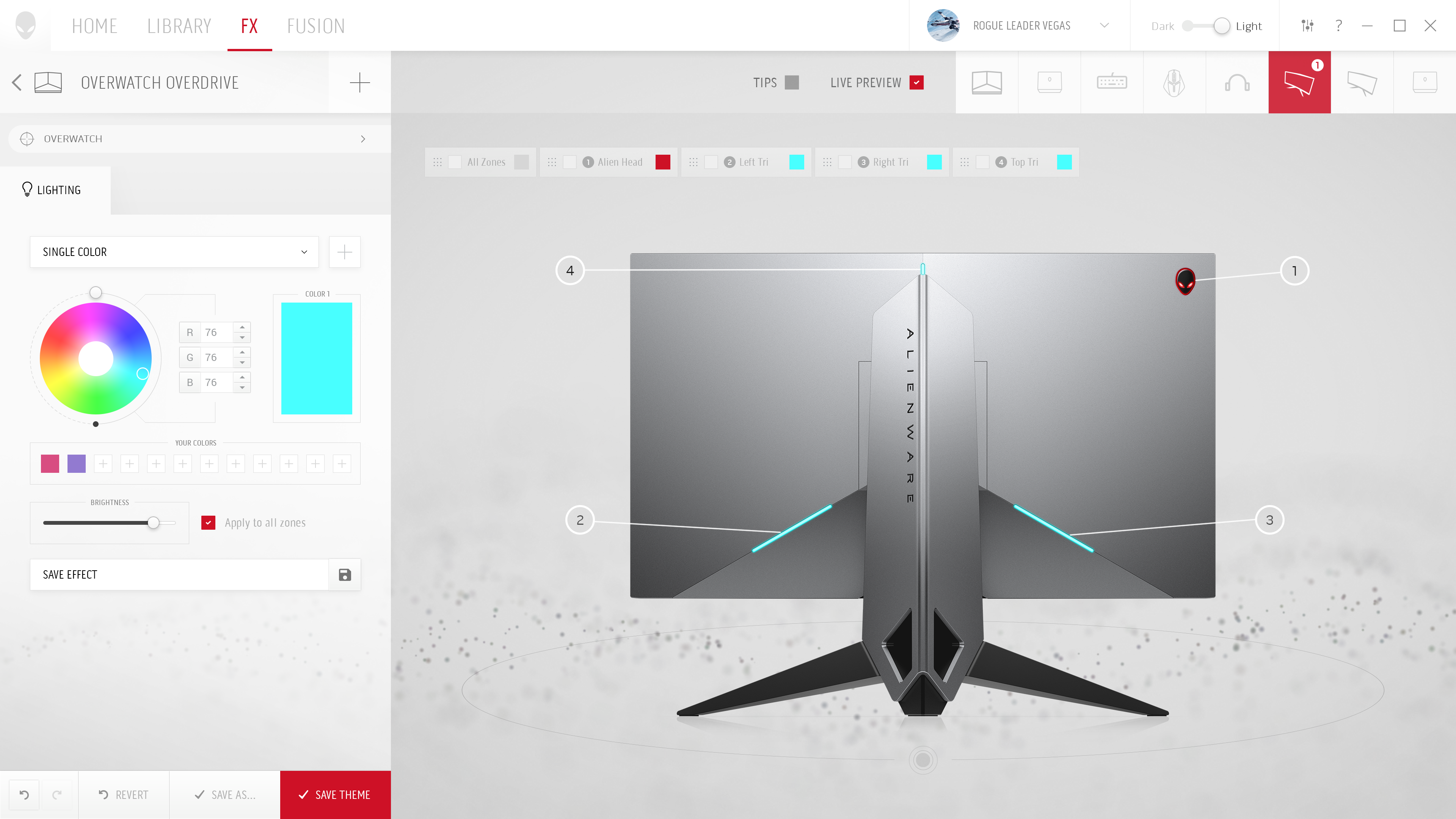
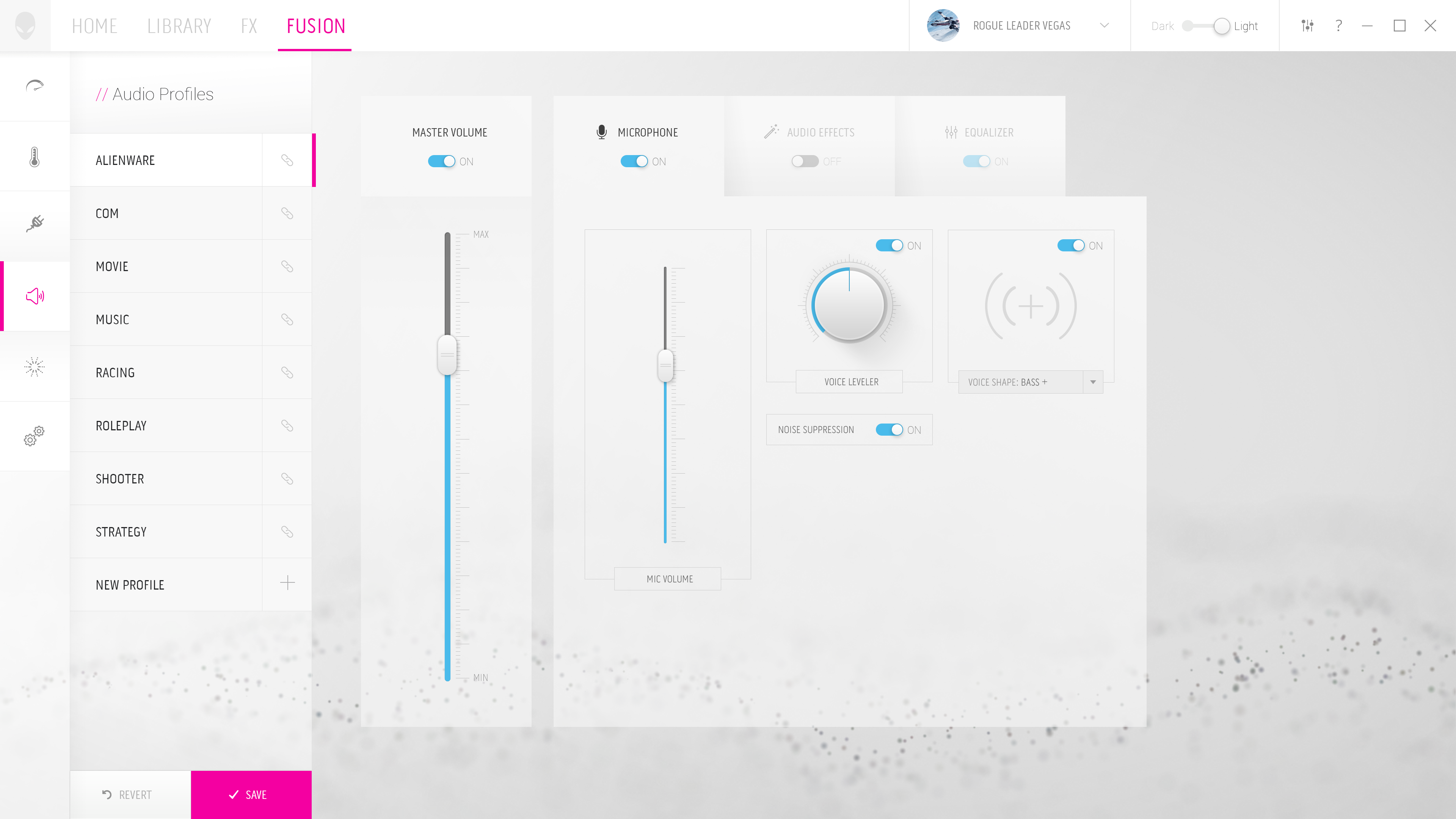
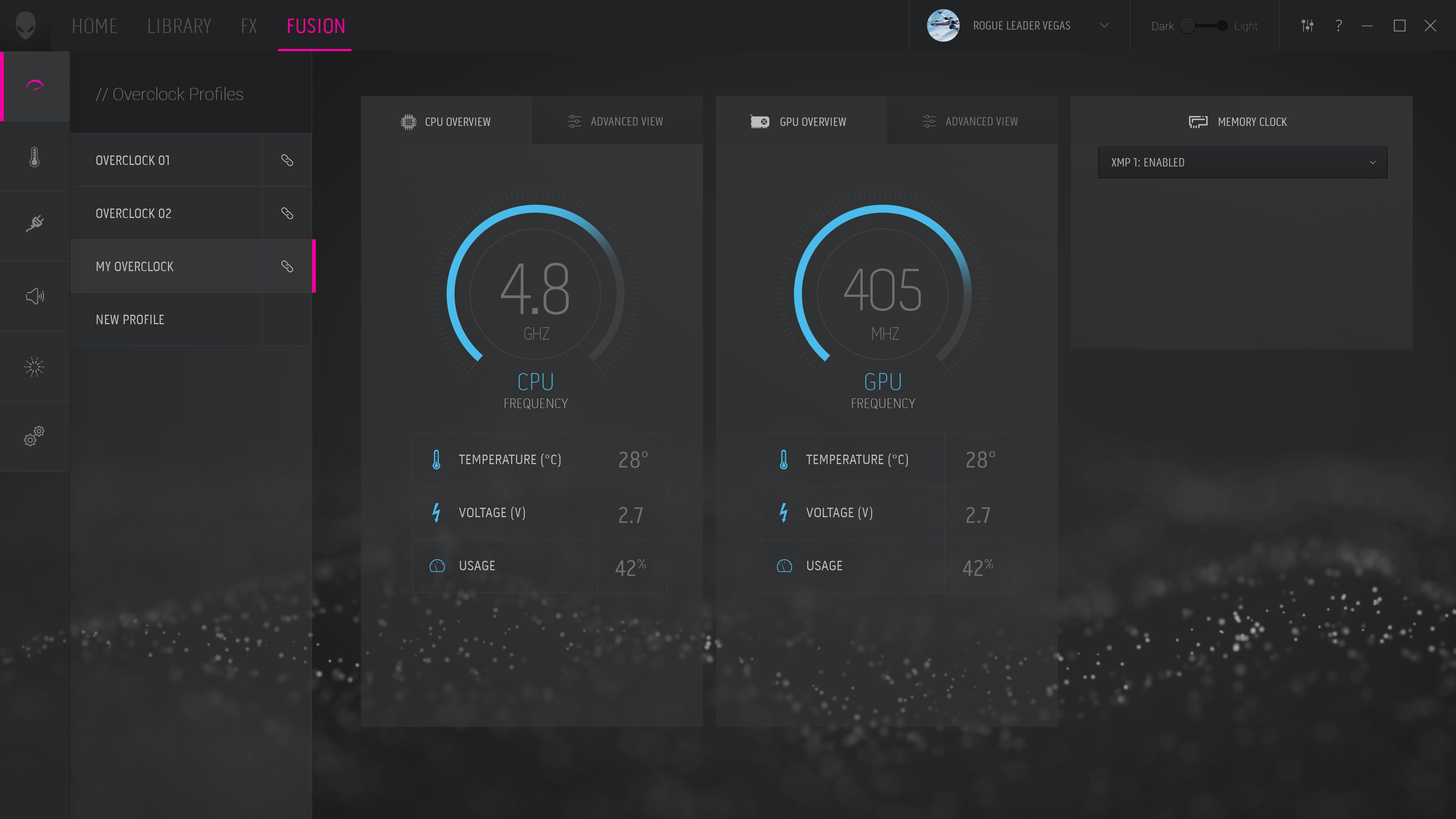
Adding motion
Despite the strong visual foundation, the system needed additional impact. I partnered with a Dell animator to elevate the experience. We initially planned to build the application in Unity, which would have enabled dynamic backgrounds and particle effects. However, development constraints forced us to pivot to pre-rendered animations instead.
I created motion mockups demonstrating the desired effects and collaborated with the animator through multiple iterations to refine the final deliverables. The example below shows one of the animated backgrounds transitioning between light and dark modes.
Internal metrics & validation
Throughout the design process, we validated decisions through regular reviews with internal participants, conducting A/B tests and usability studies to inform iterations.
Delivery to development
Given the system's complexity—and working in the pre-Figma era—we invested significant effort in creating detailed specifications to ensure pixel-perfect implementation. I also developed terminology guides to establish shared language across teams when discussing specific features.
